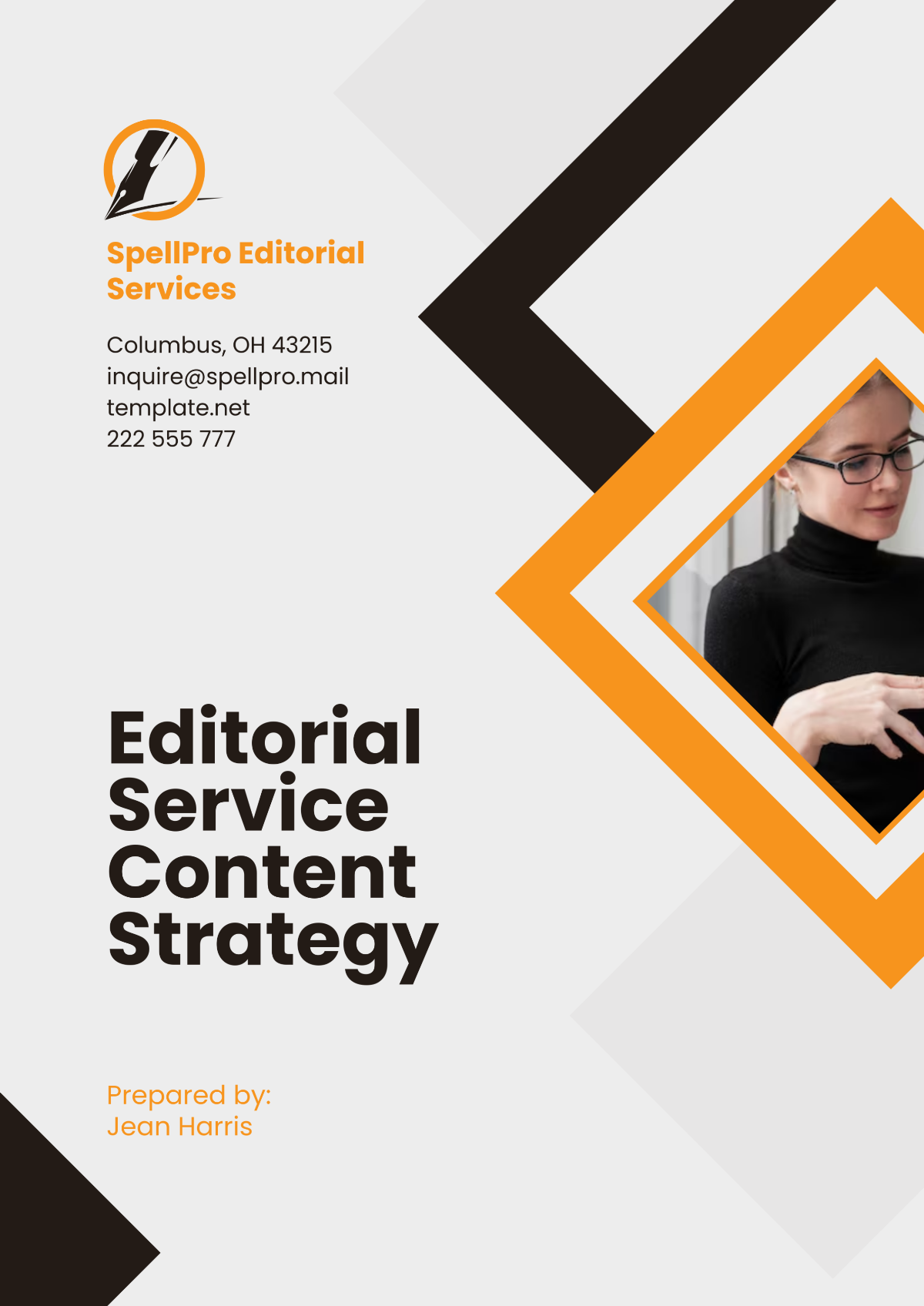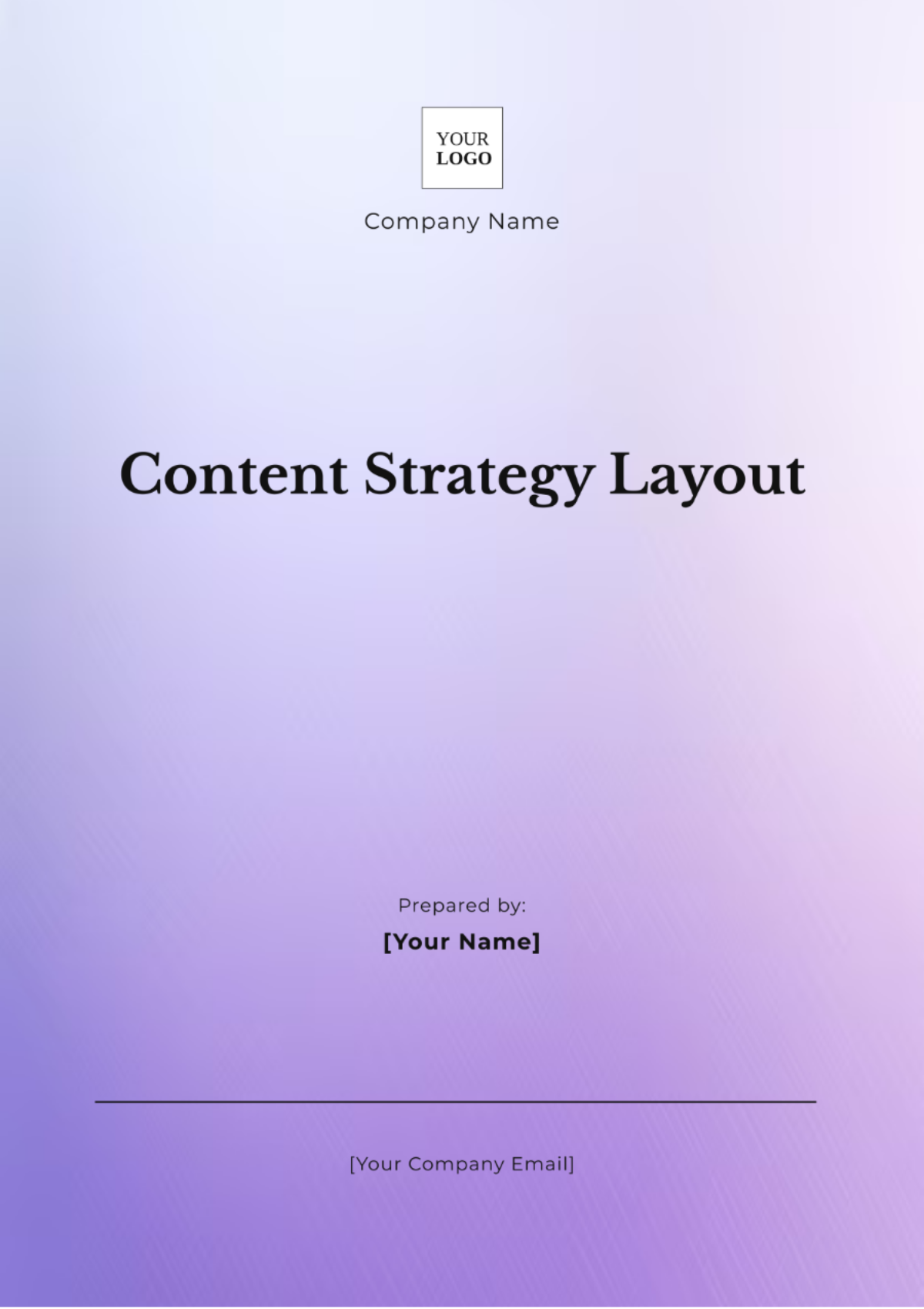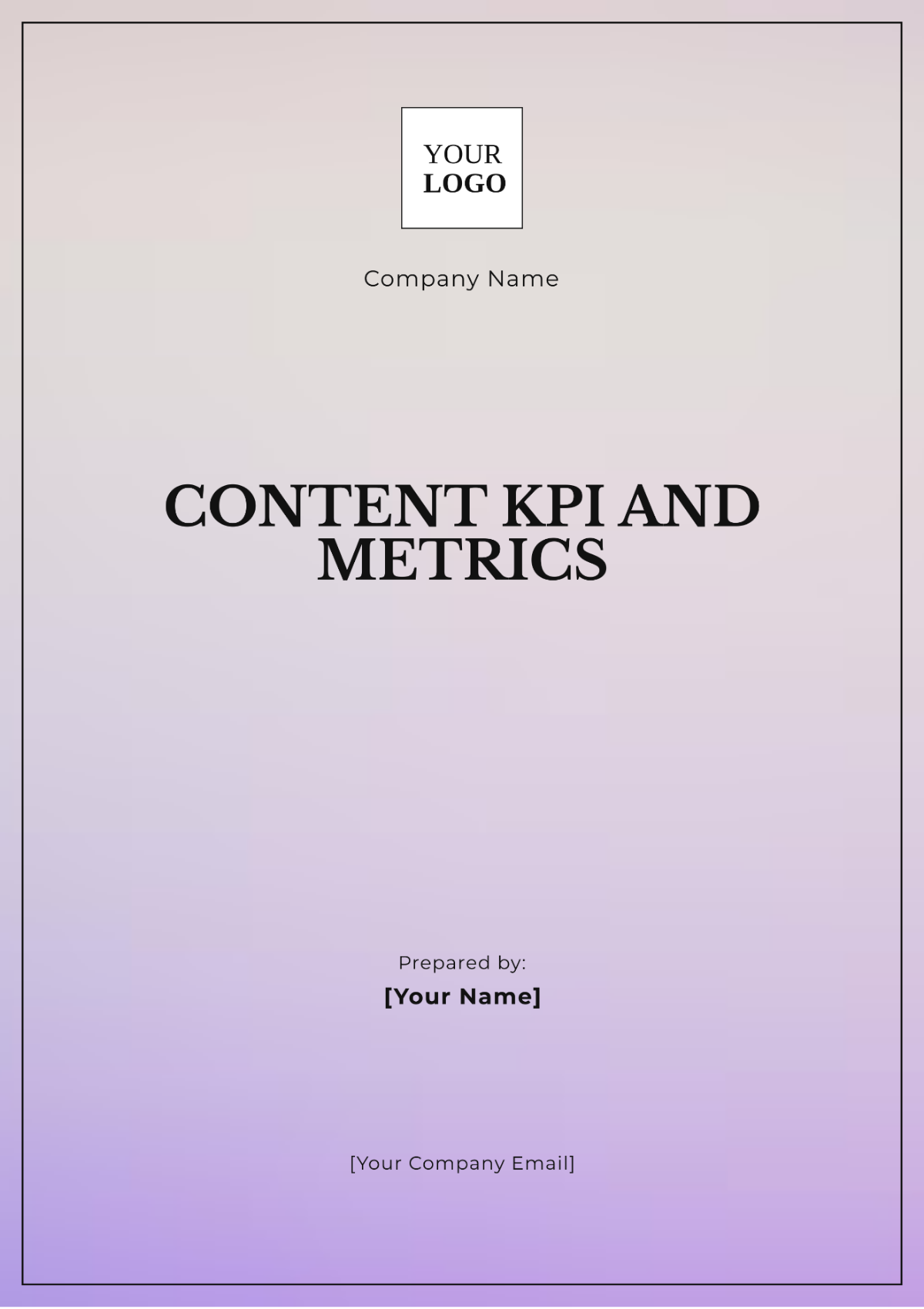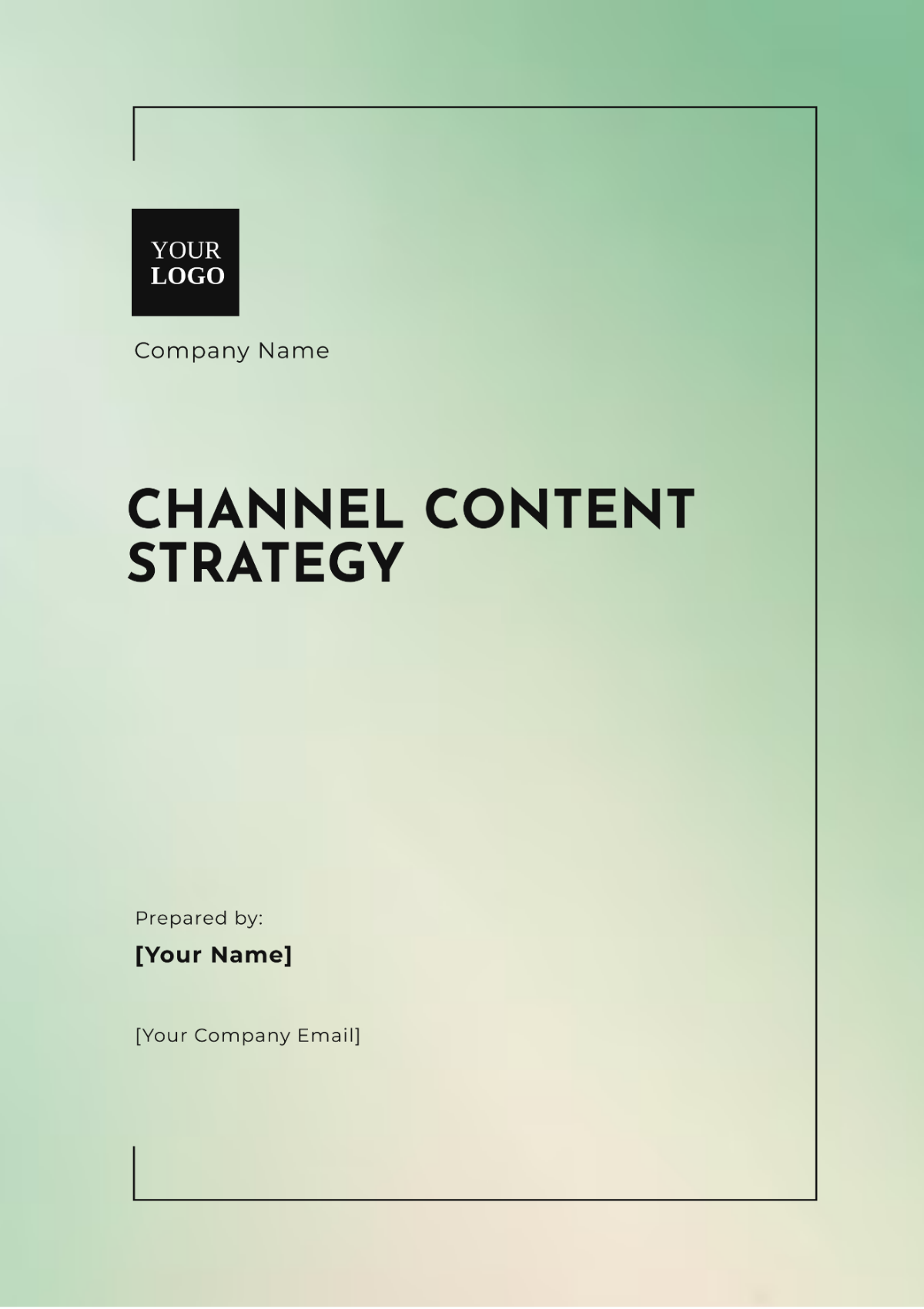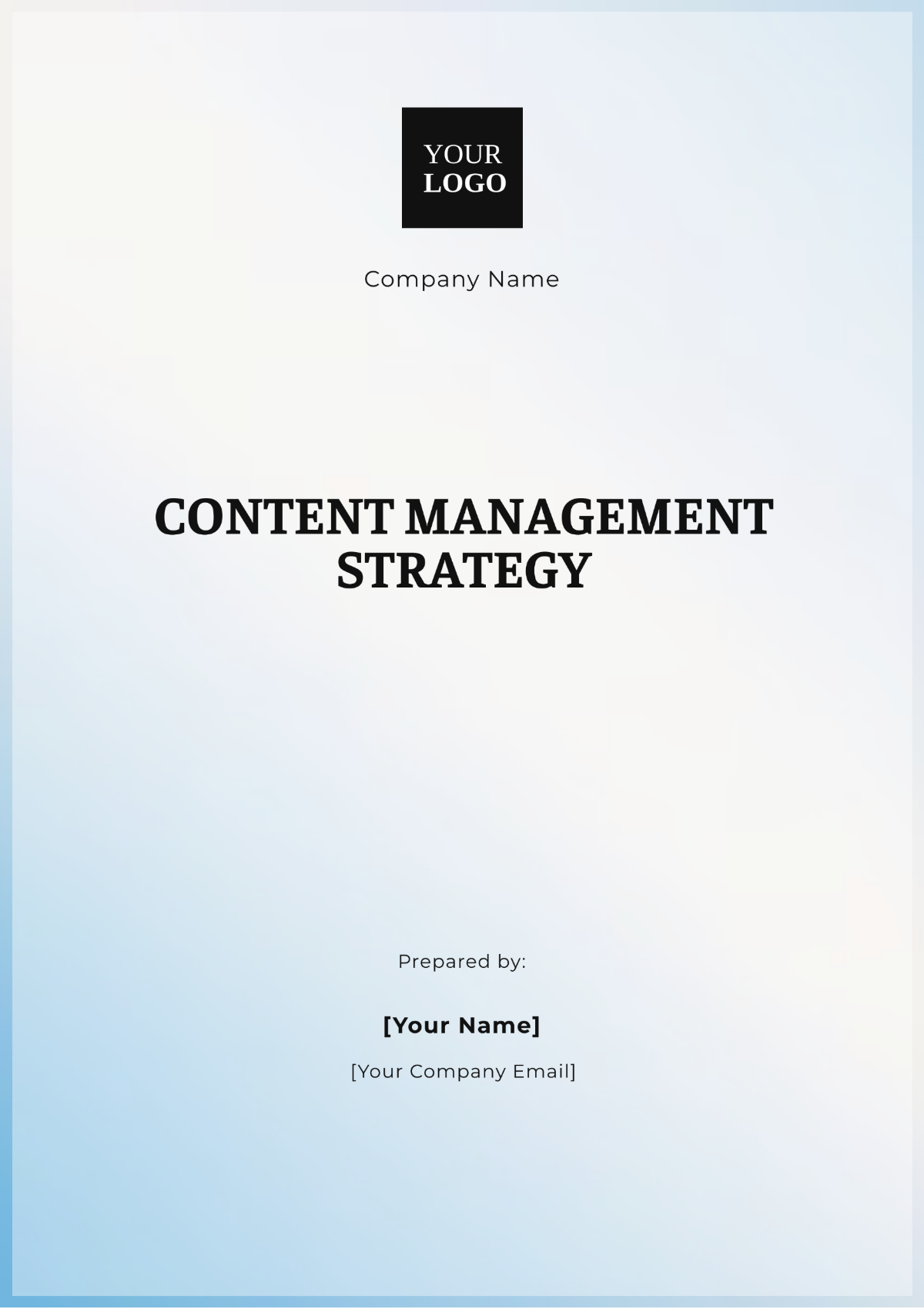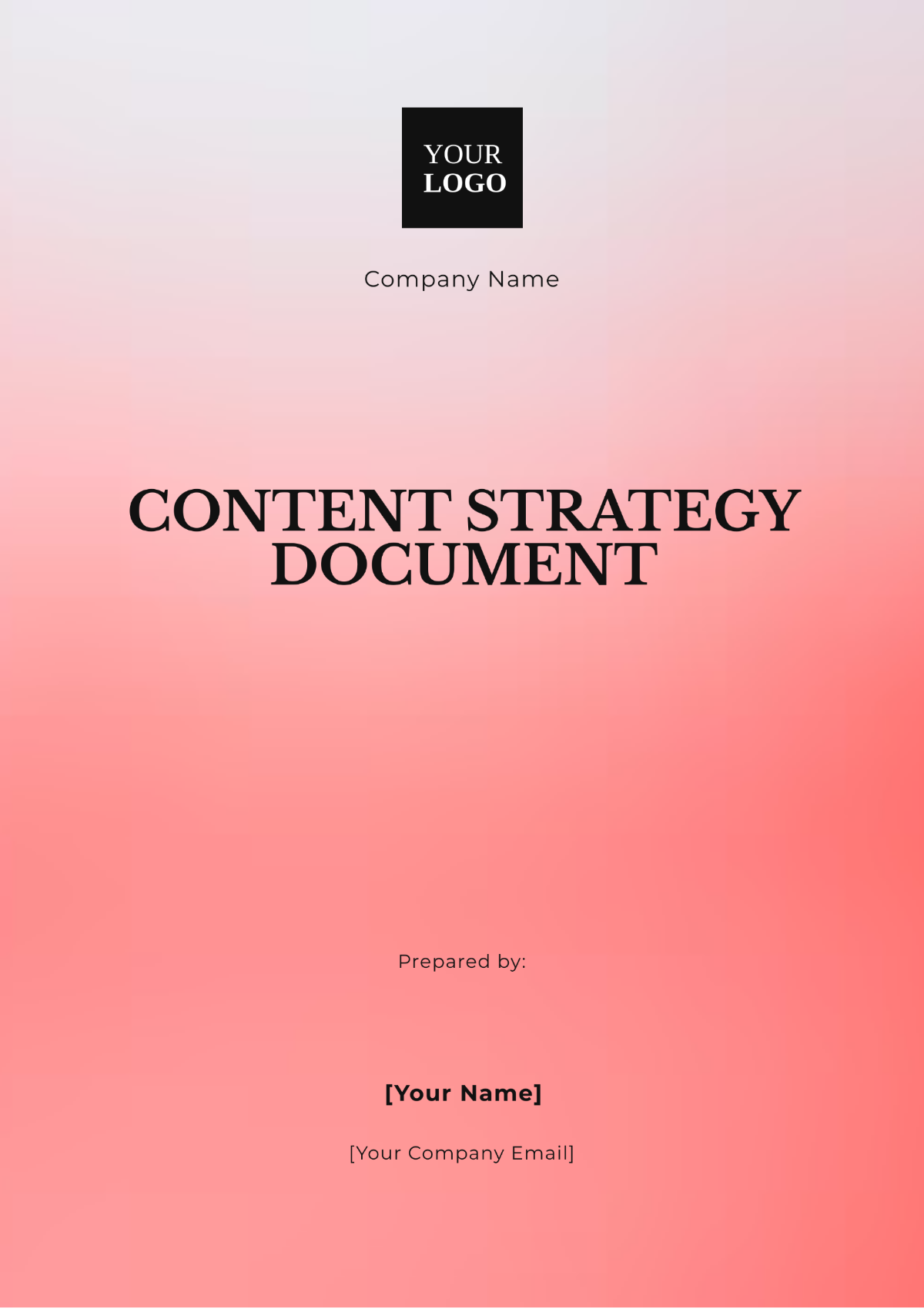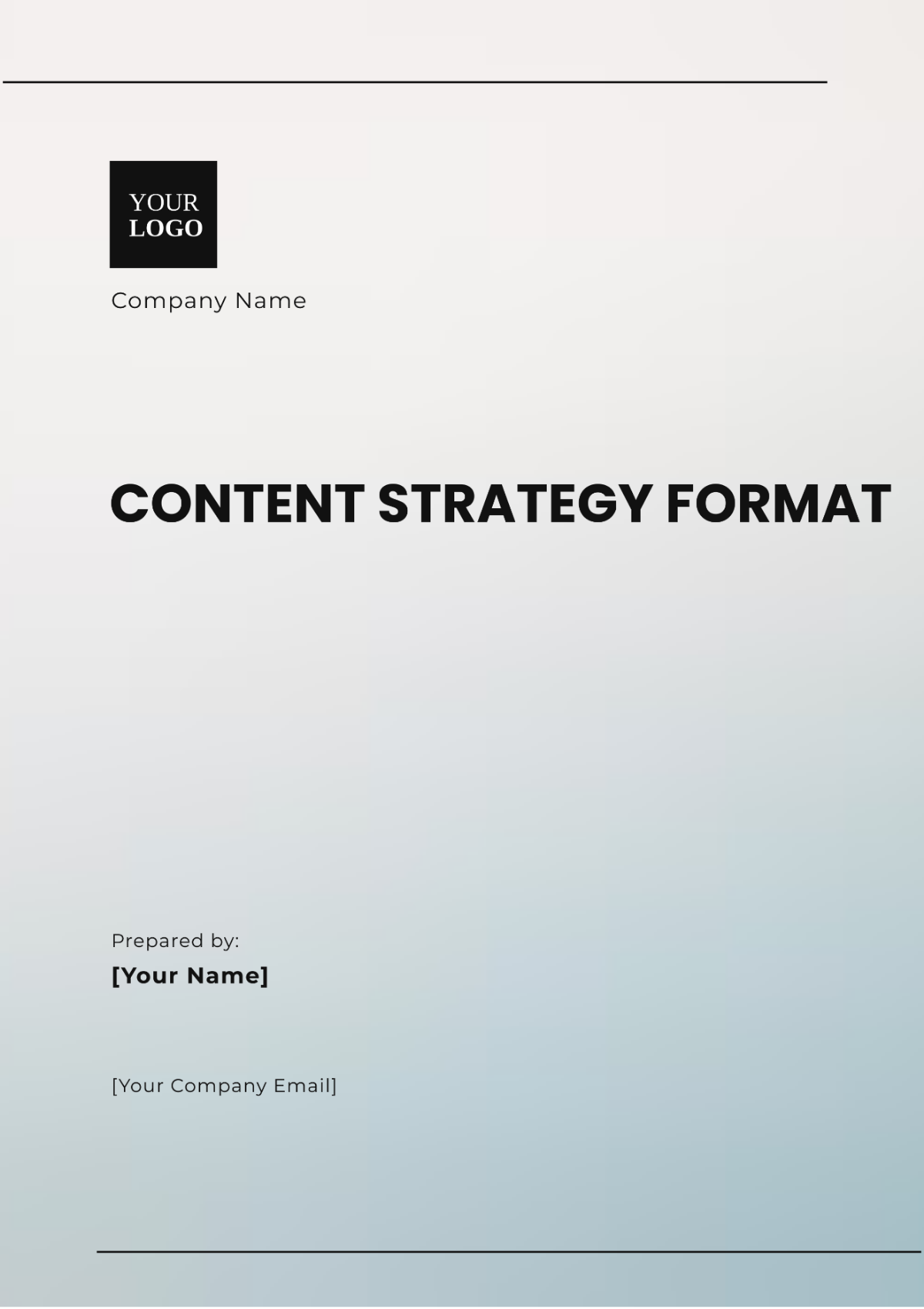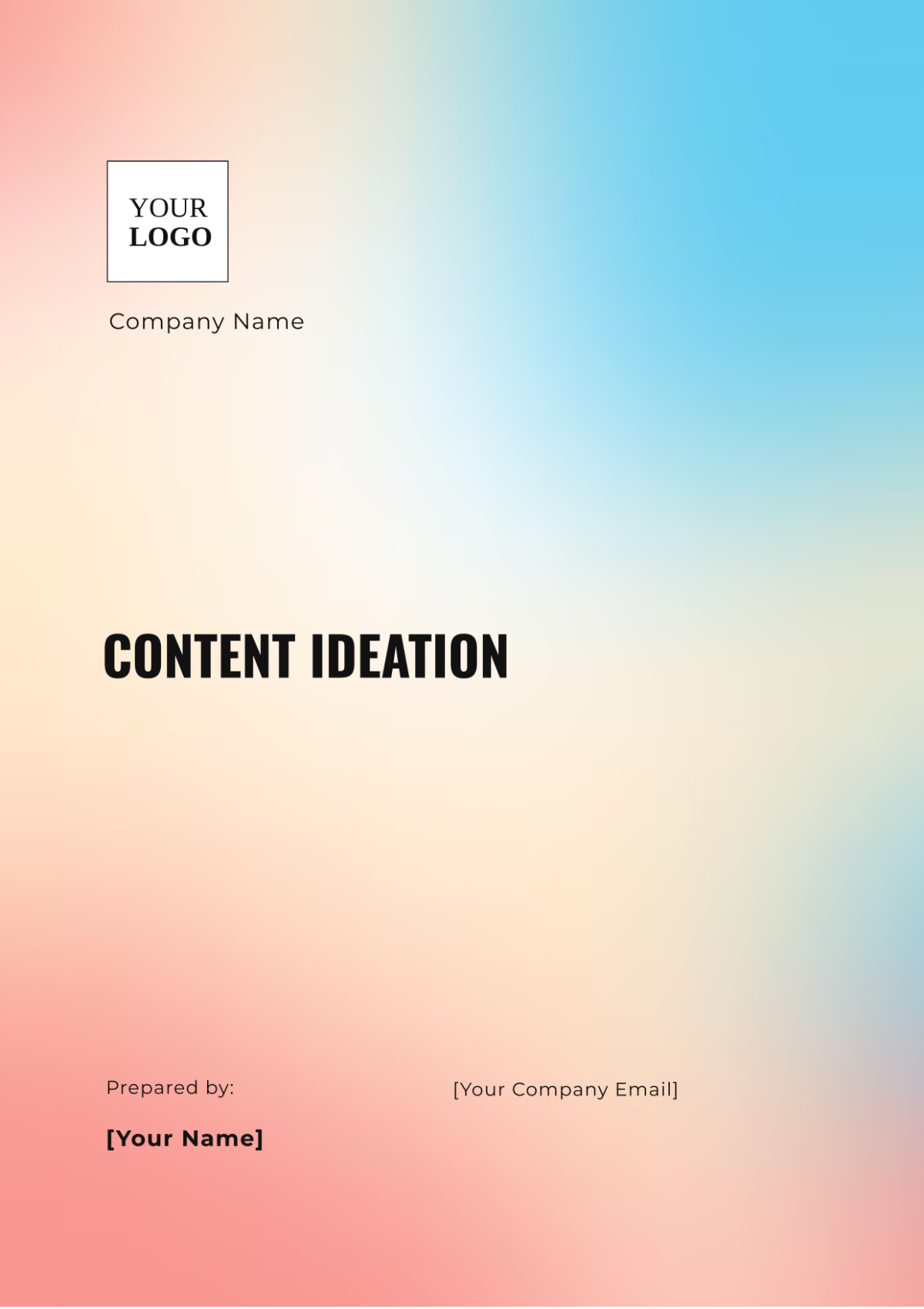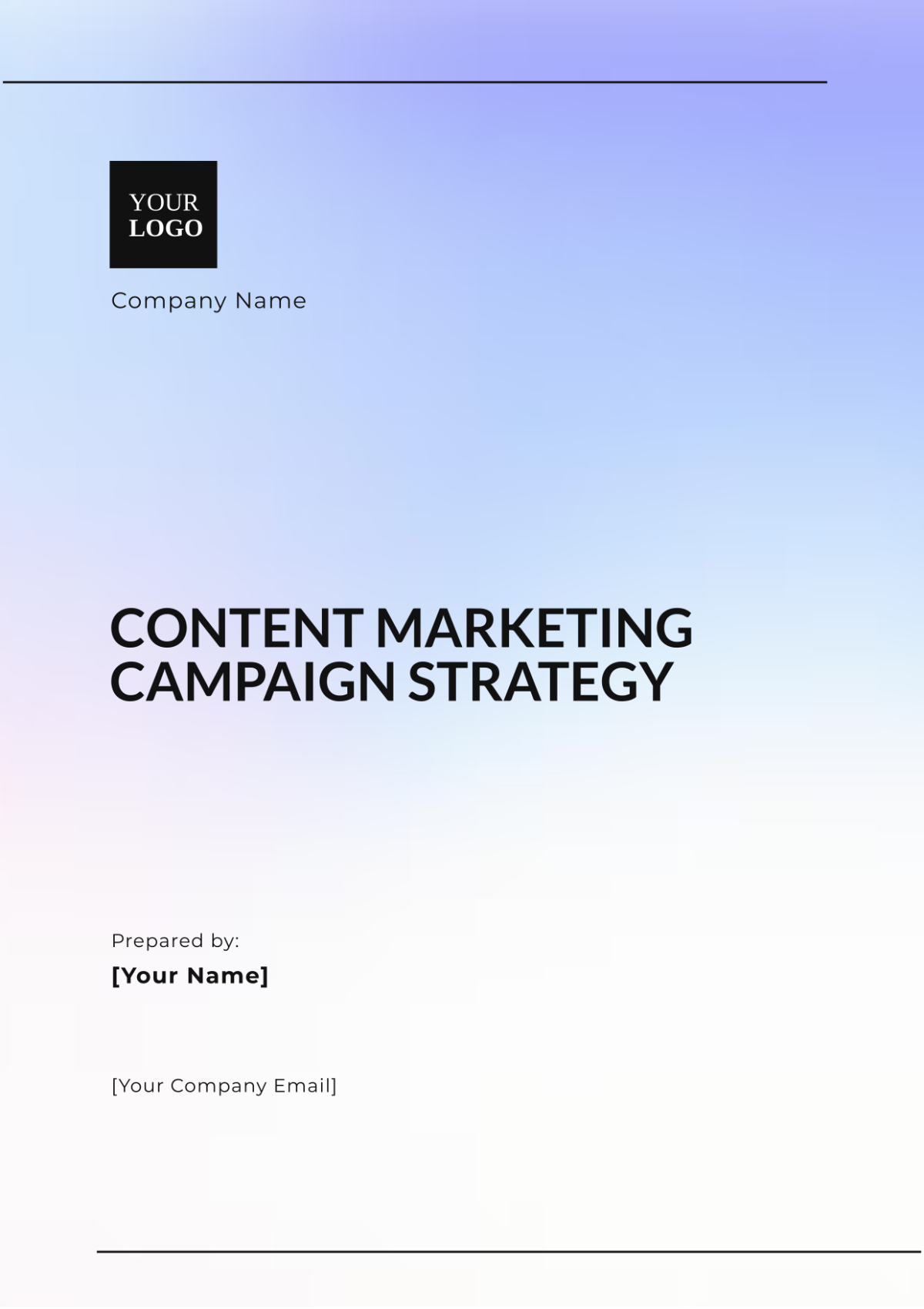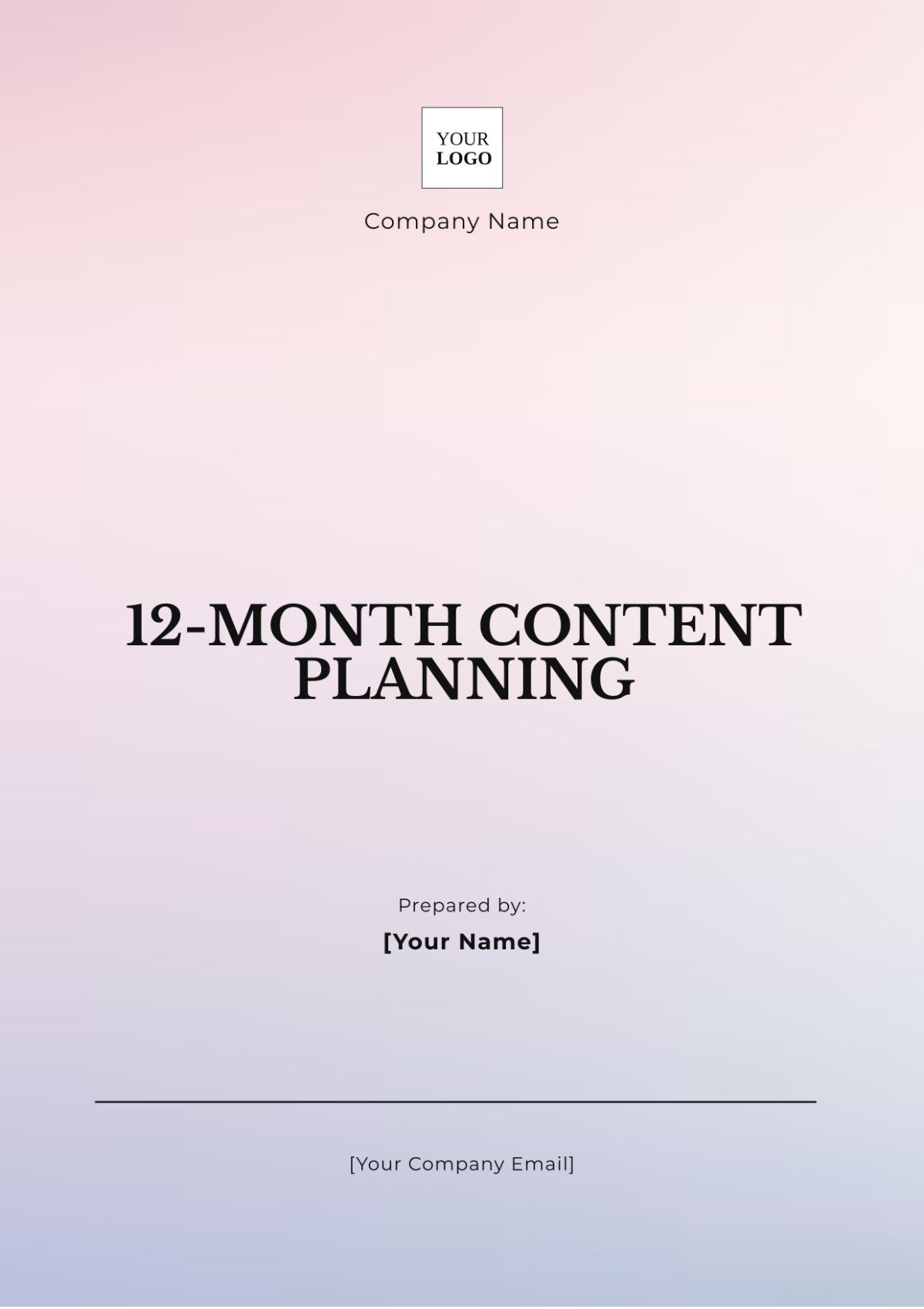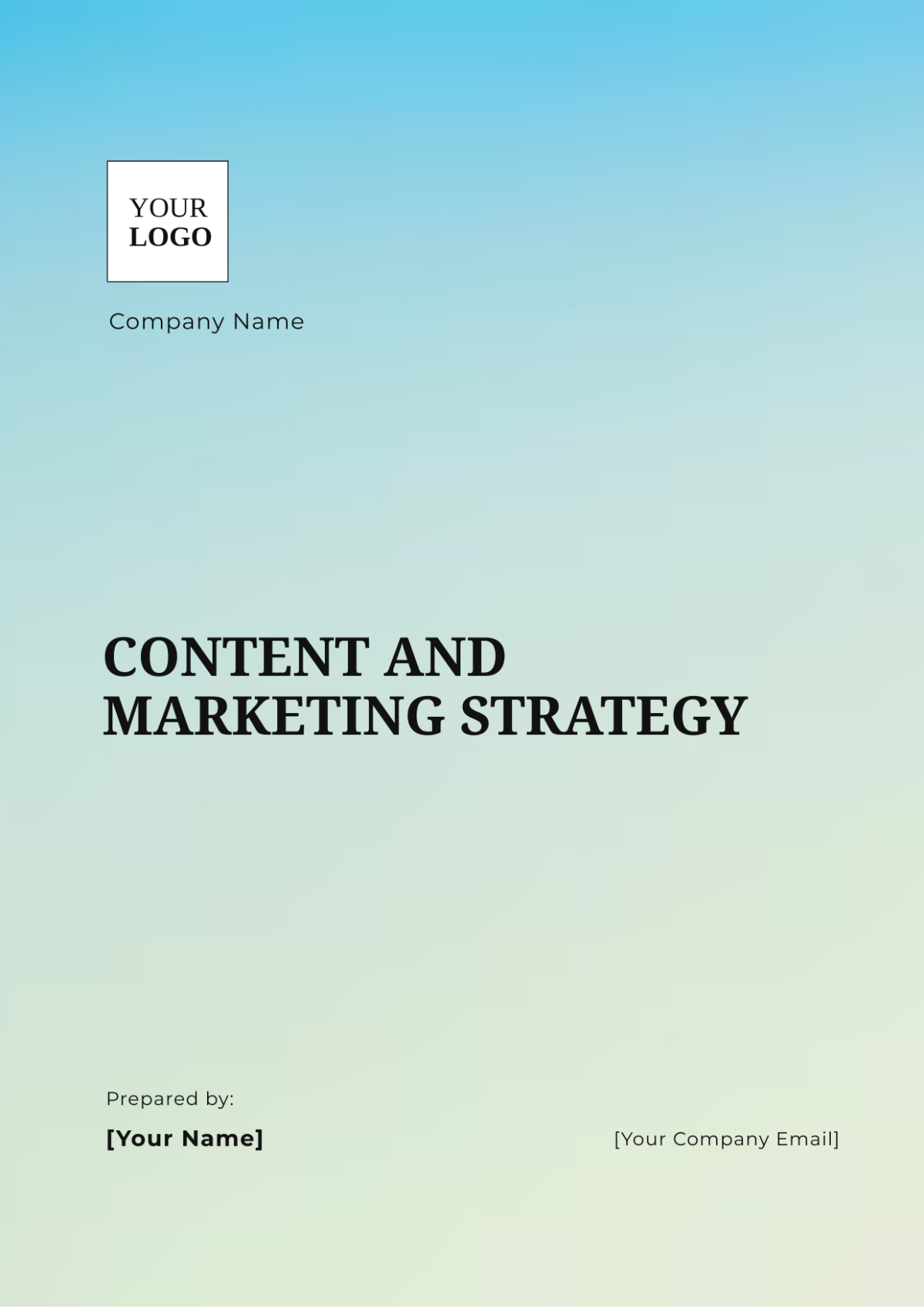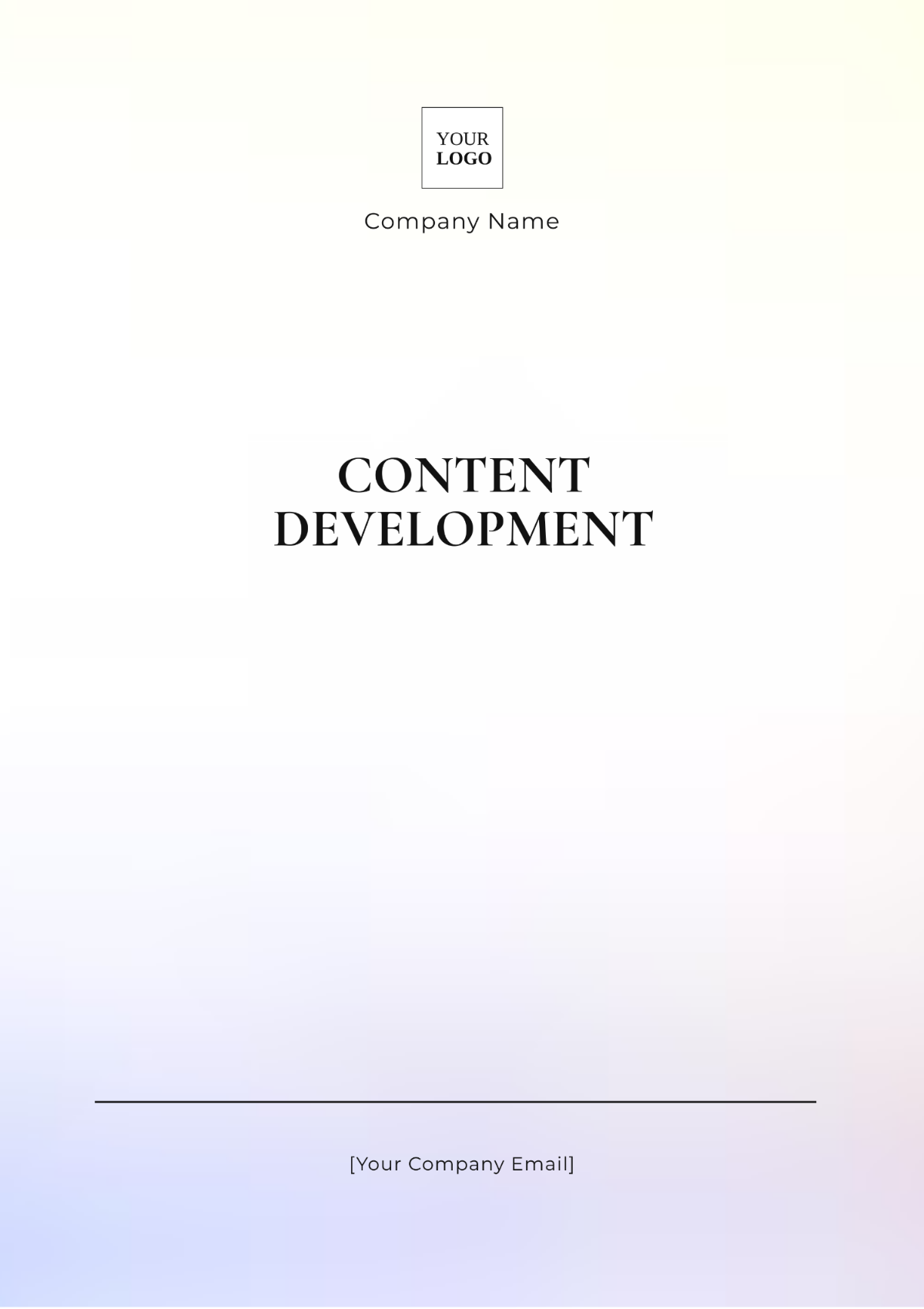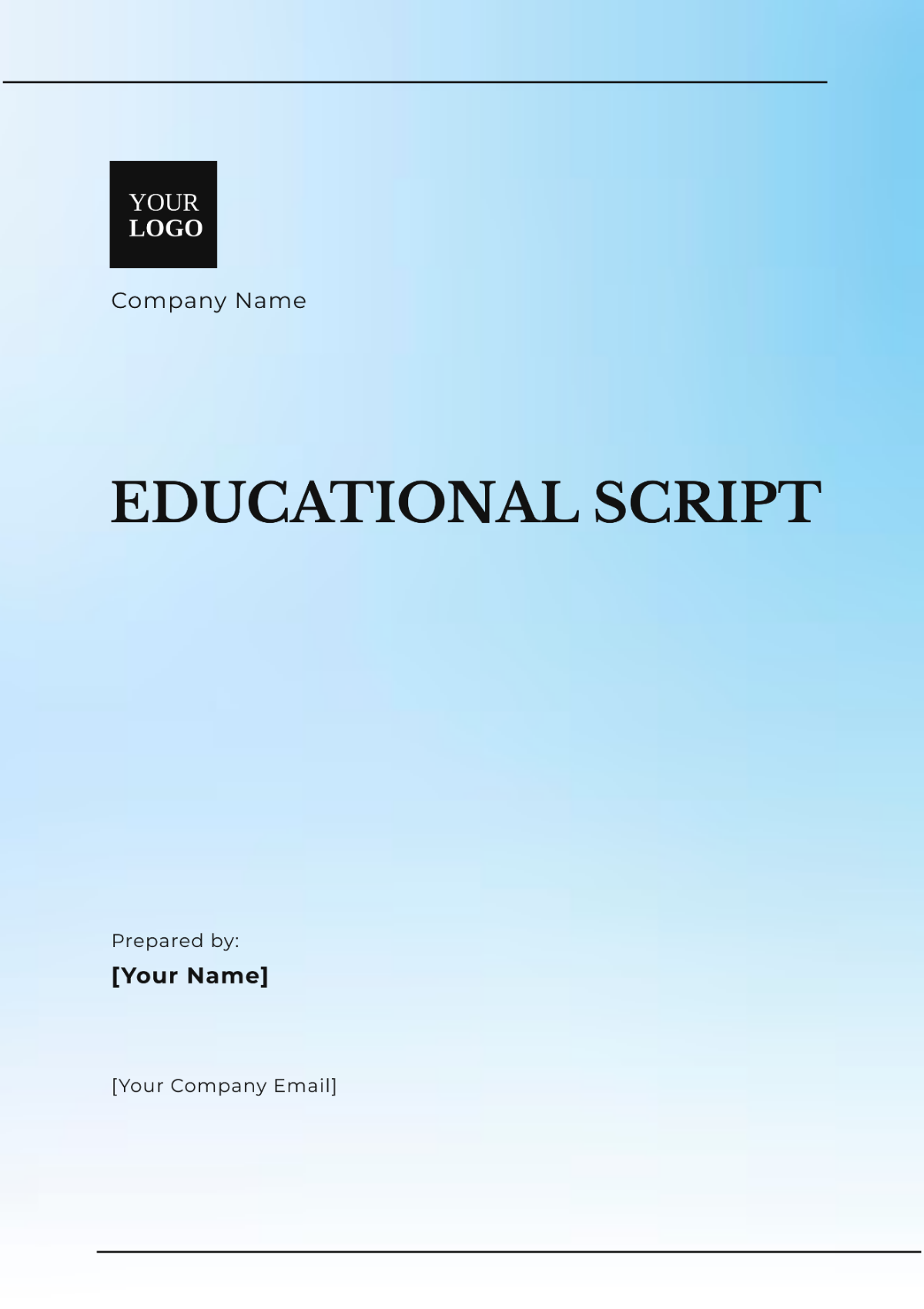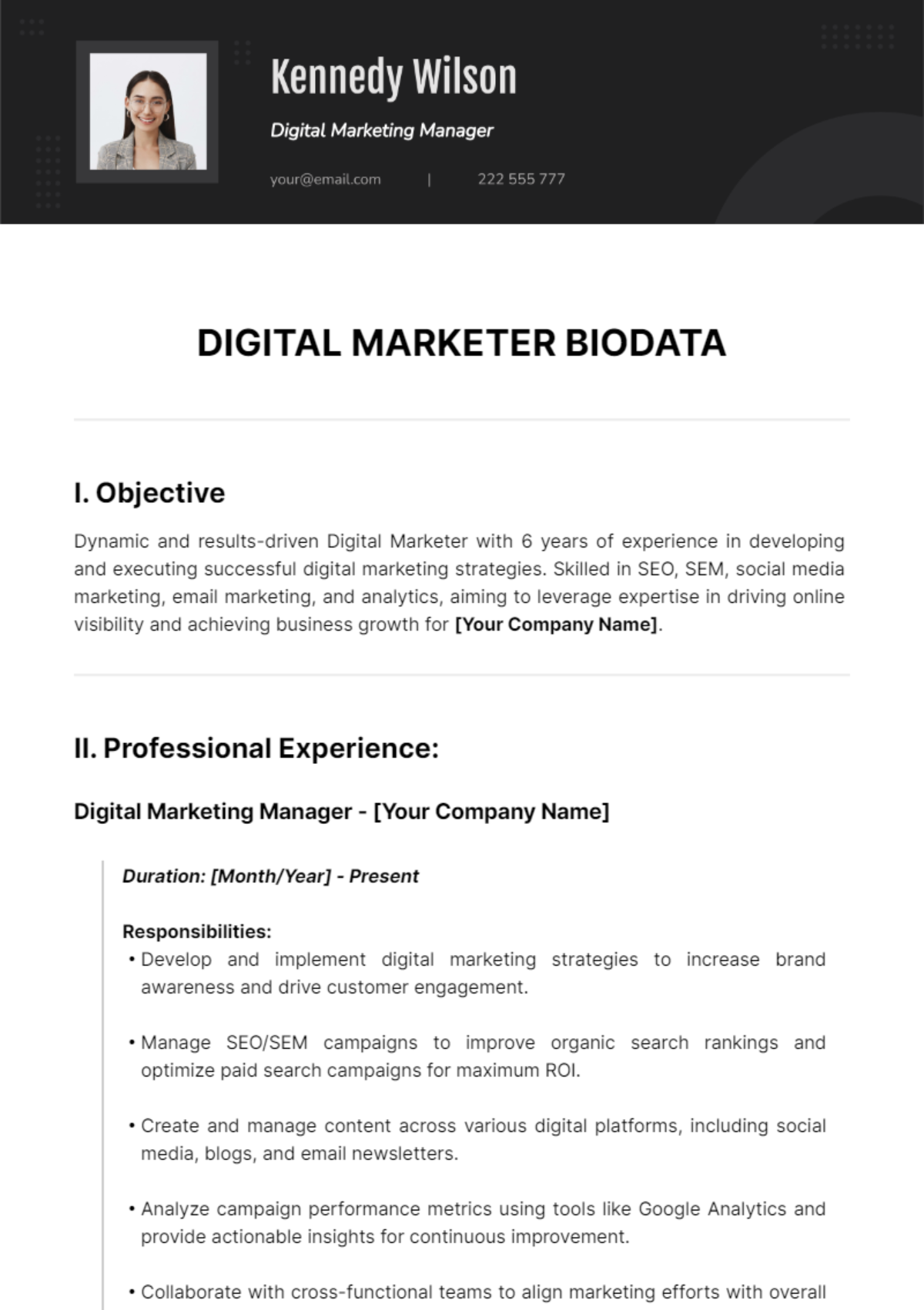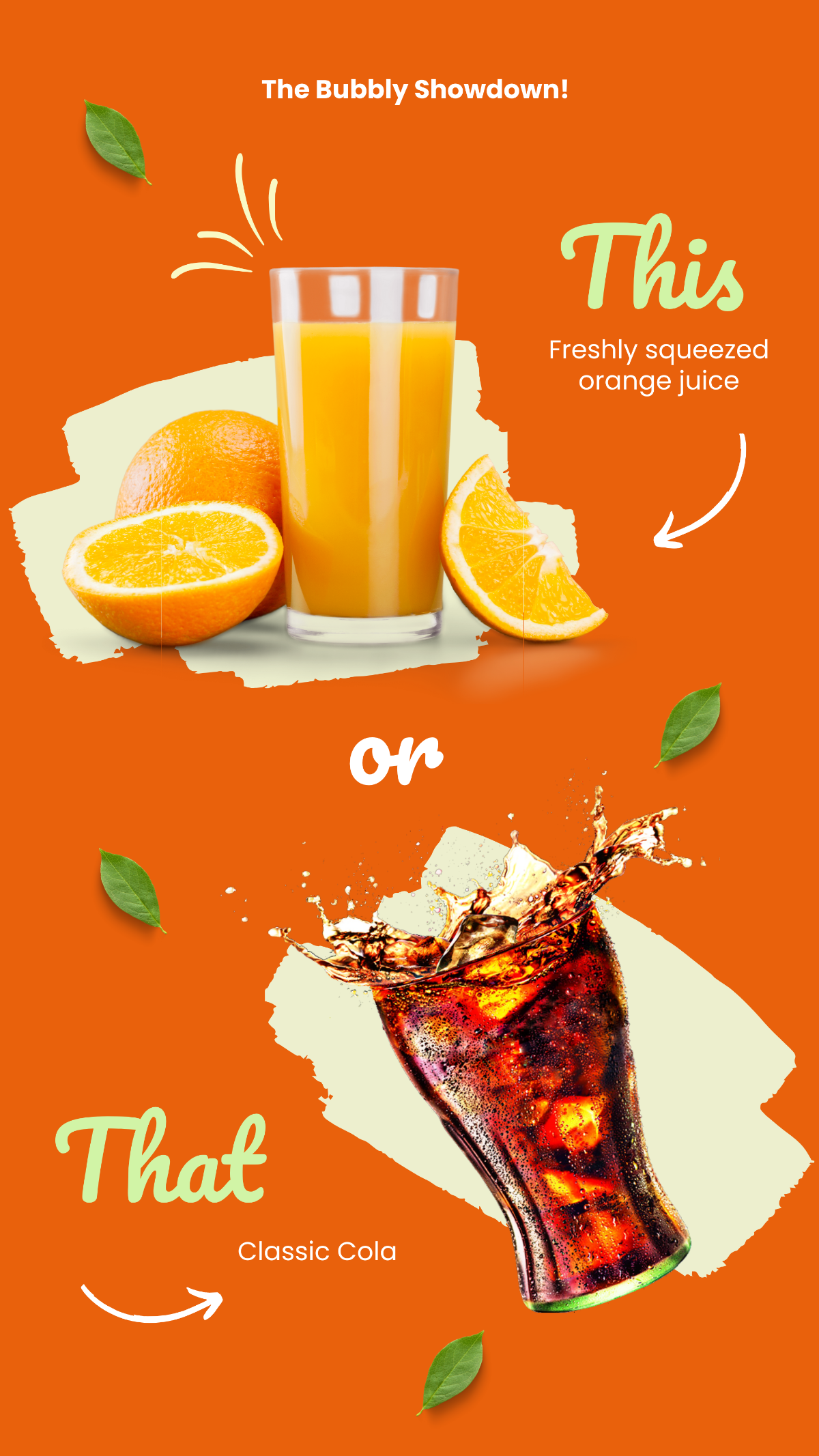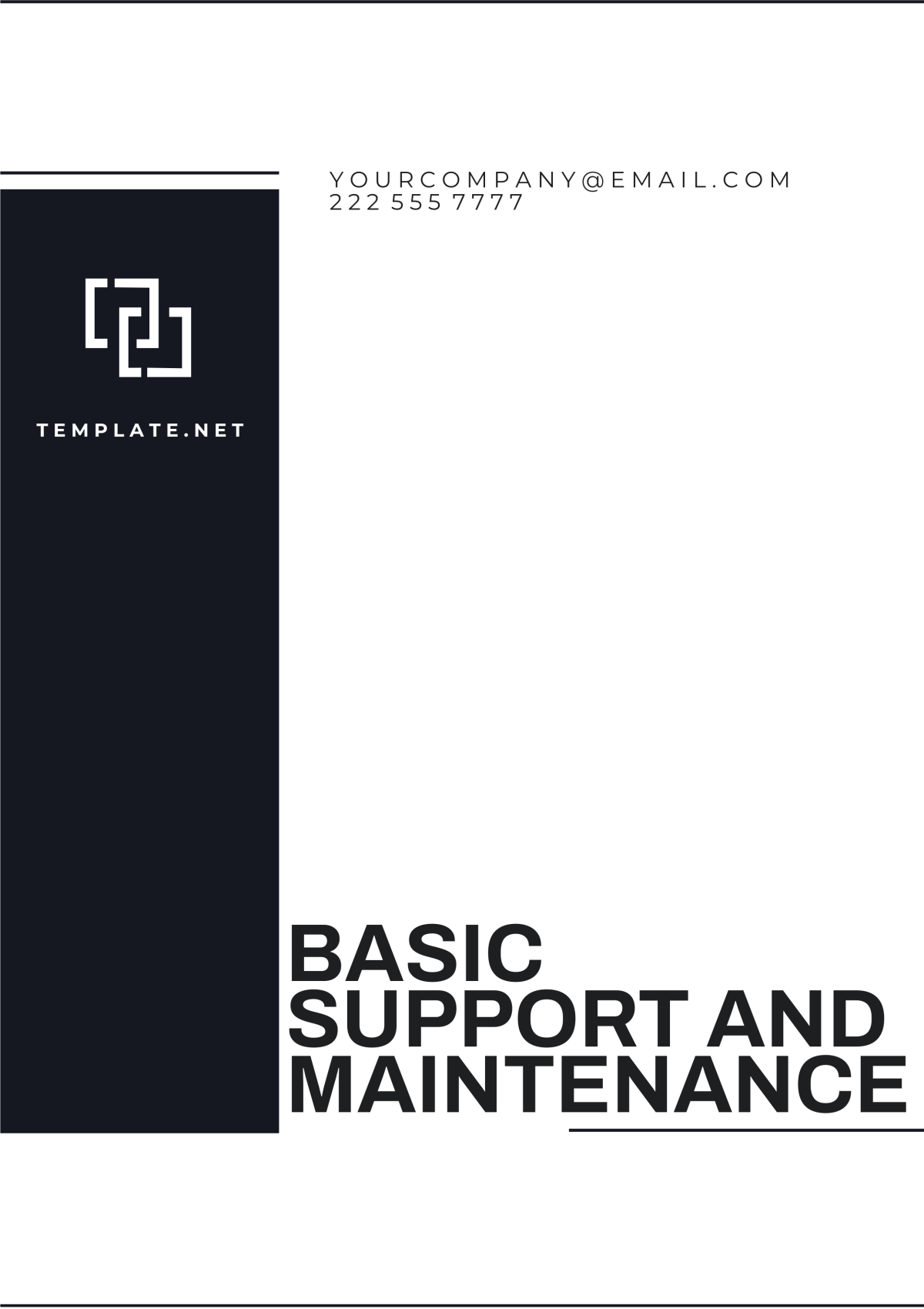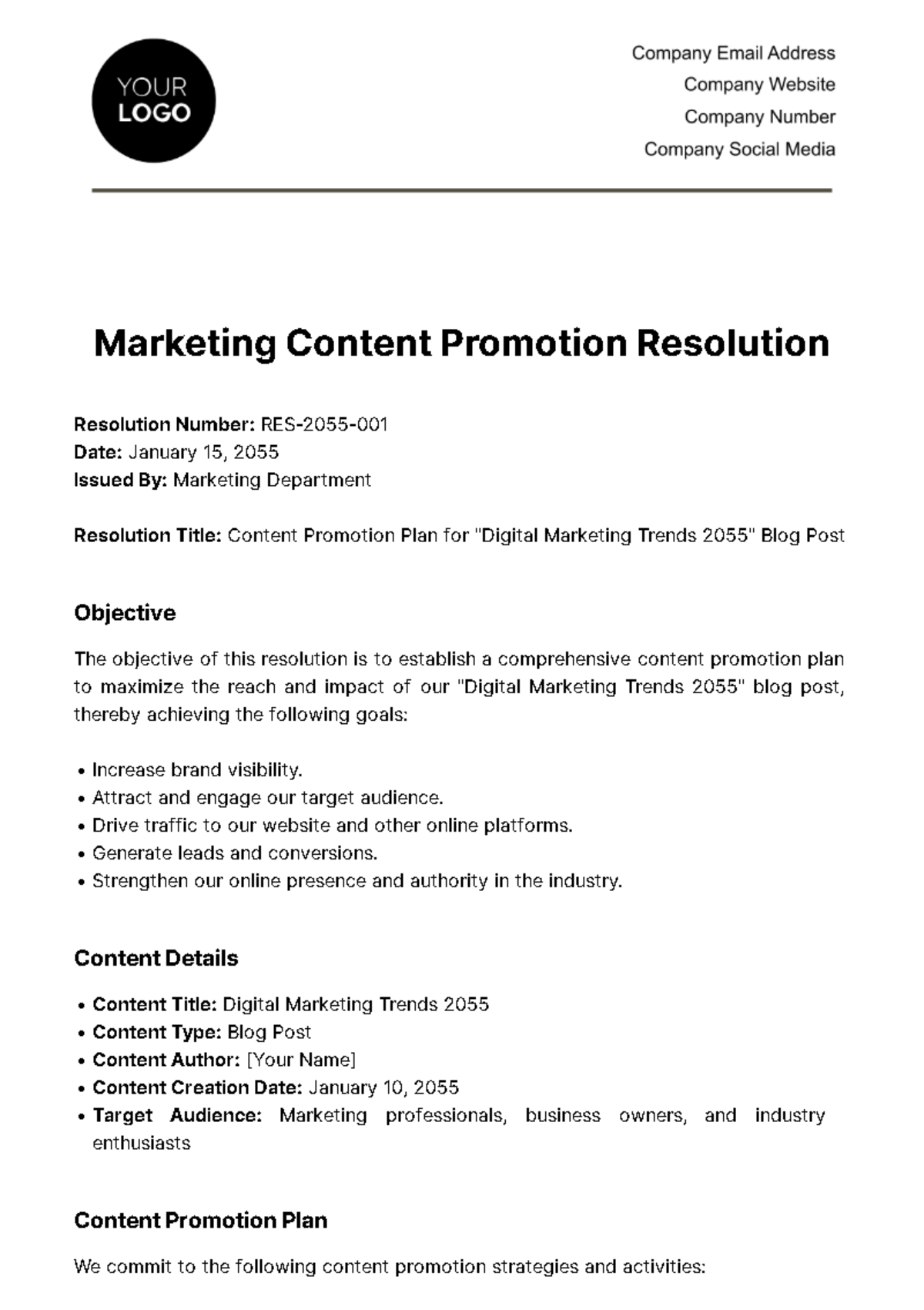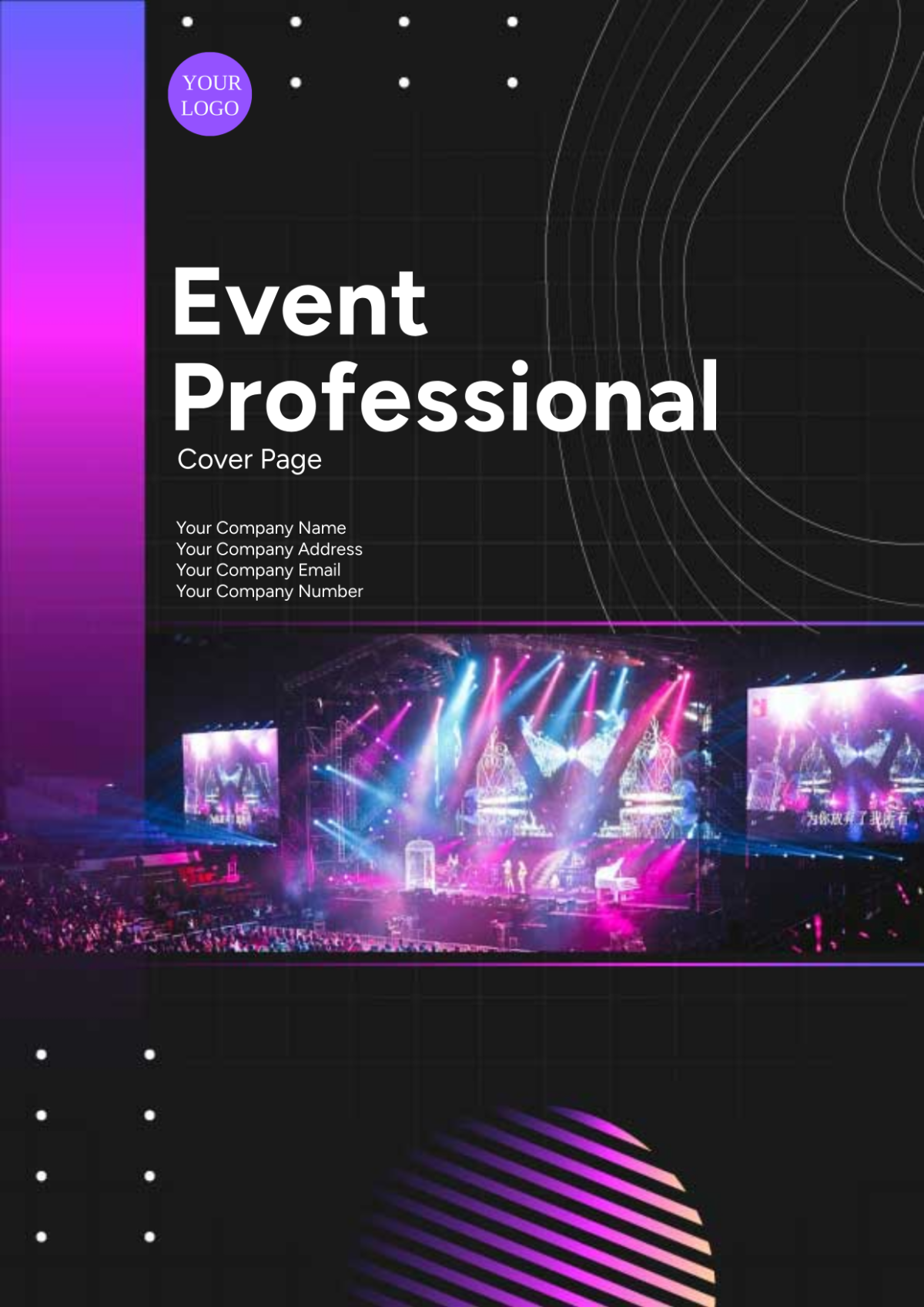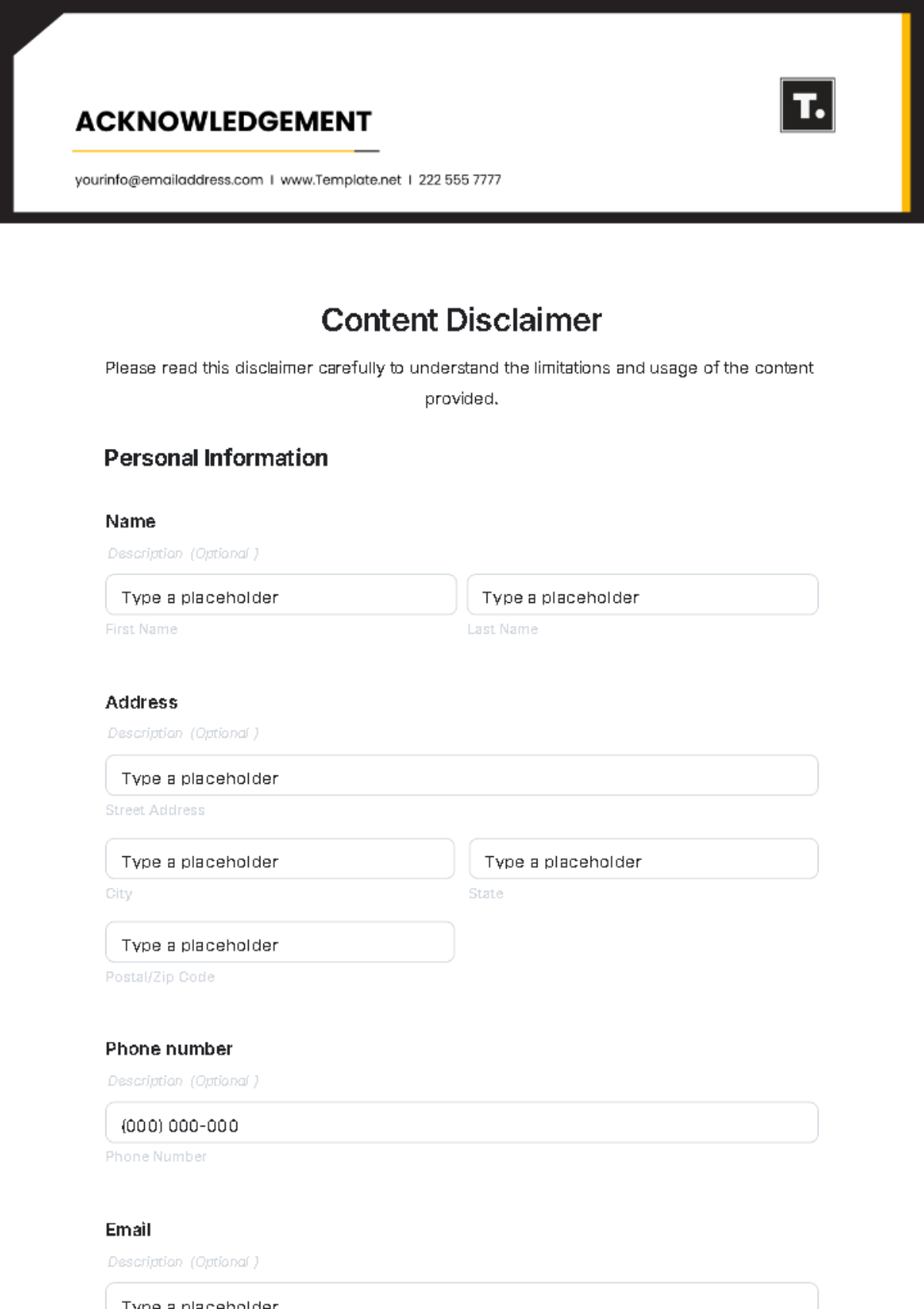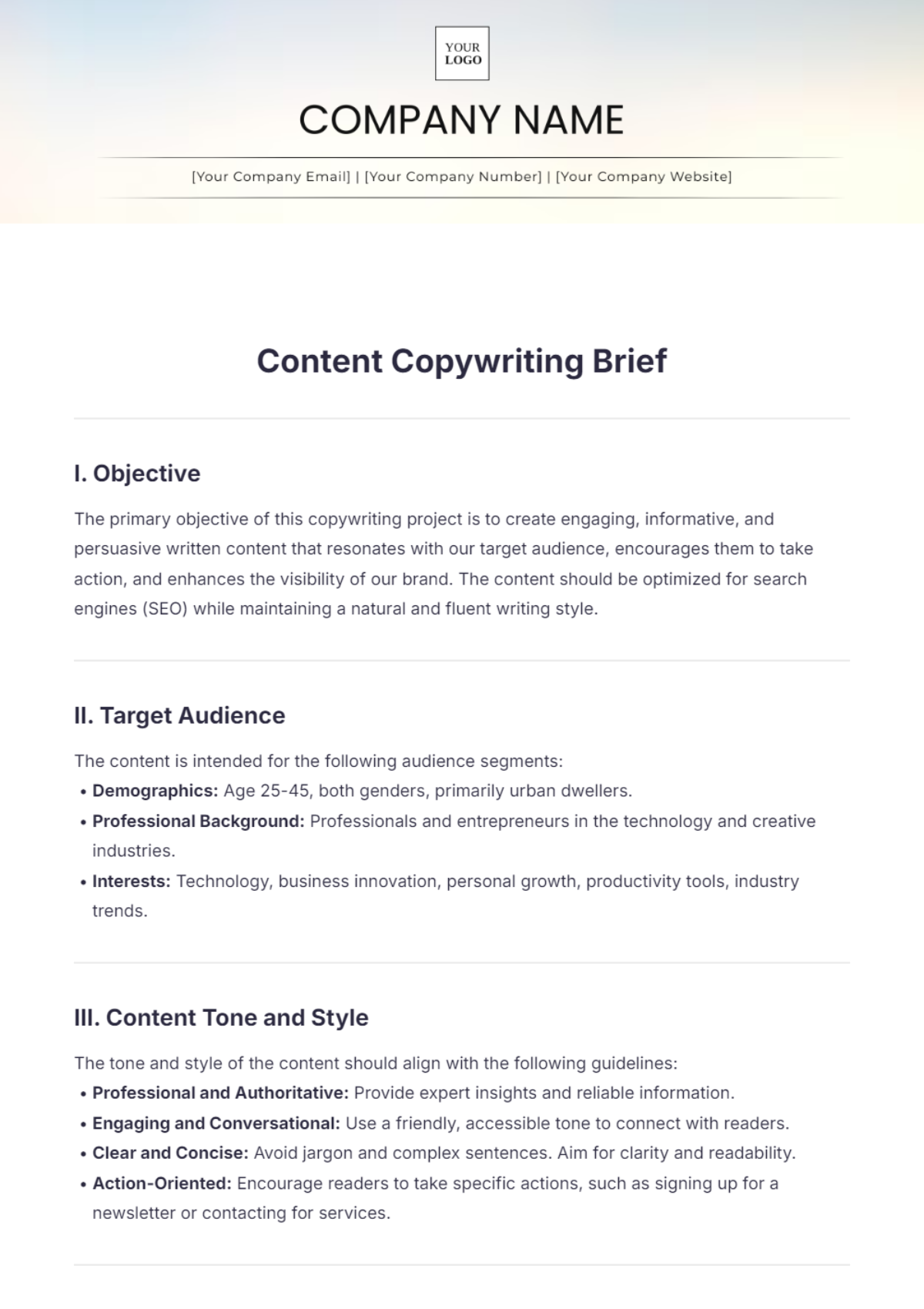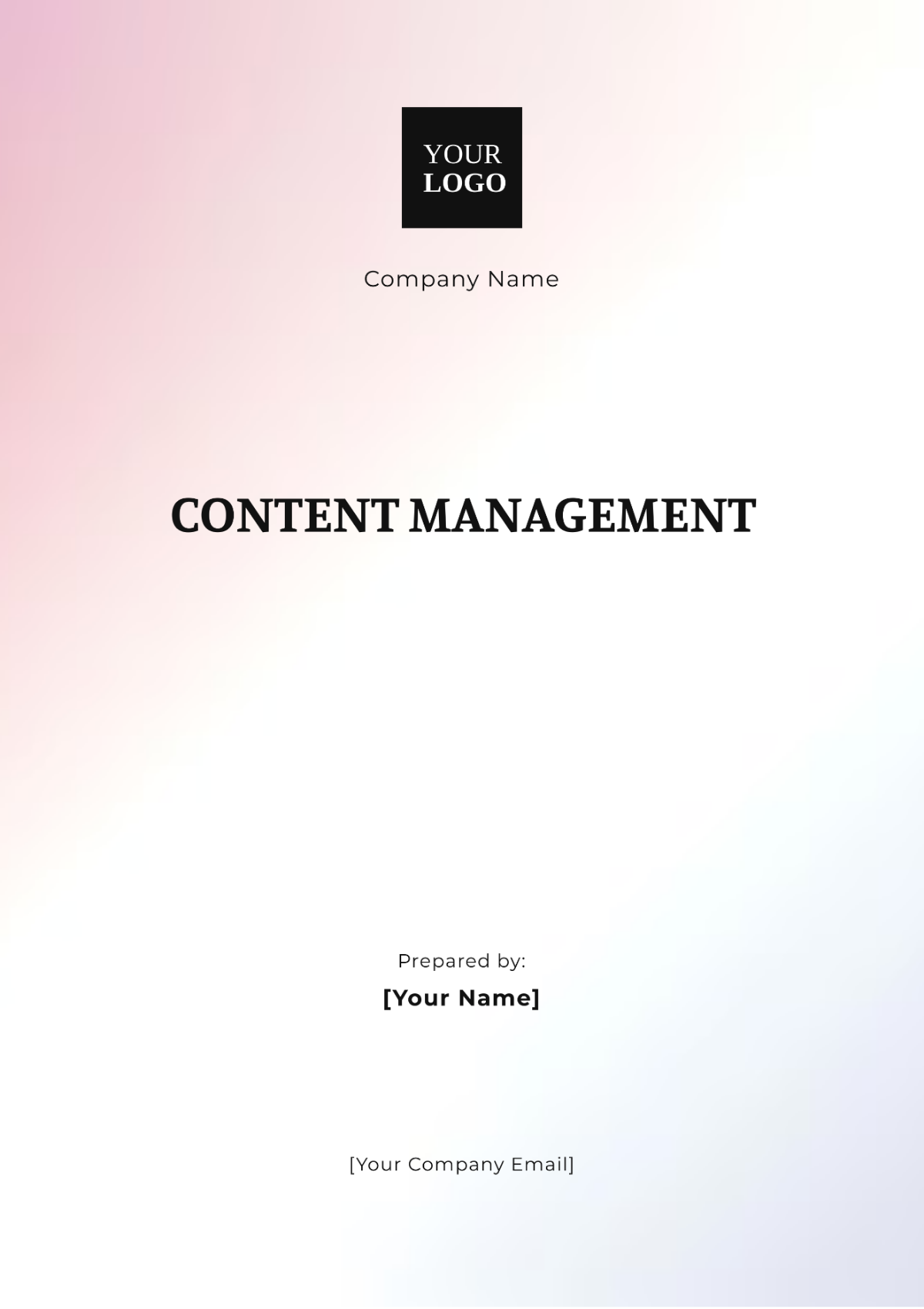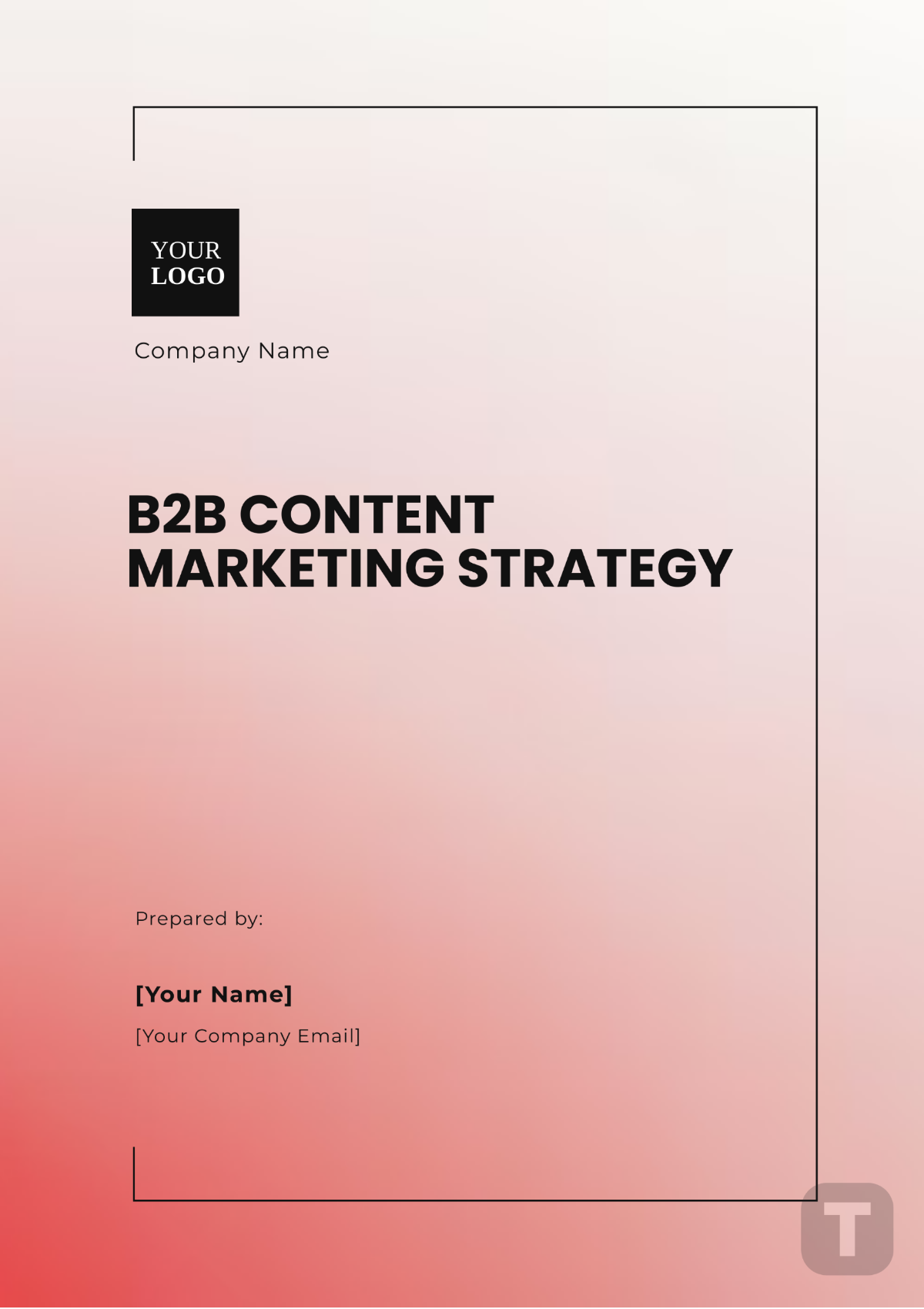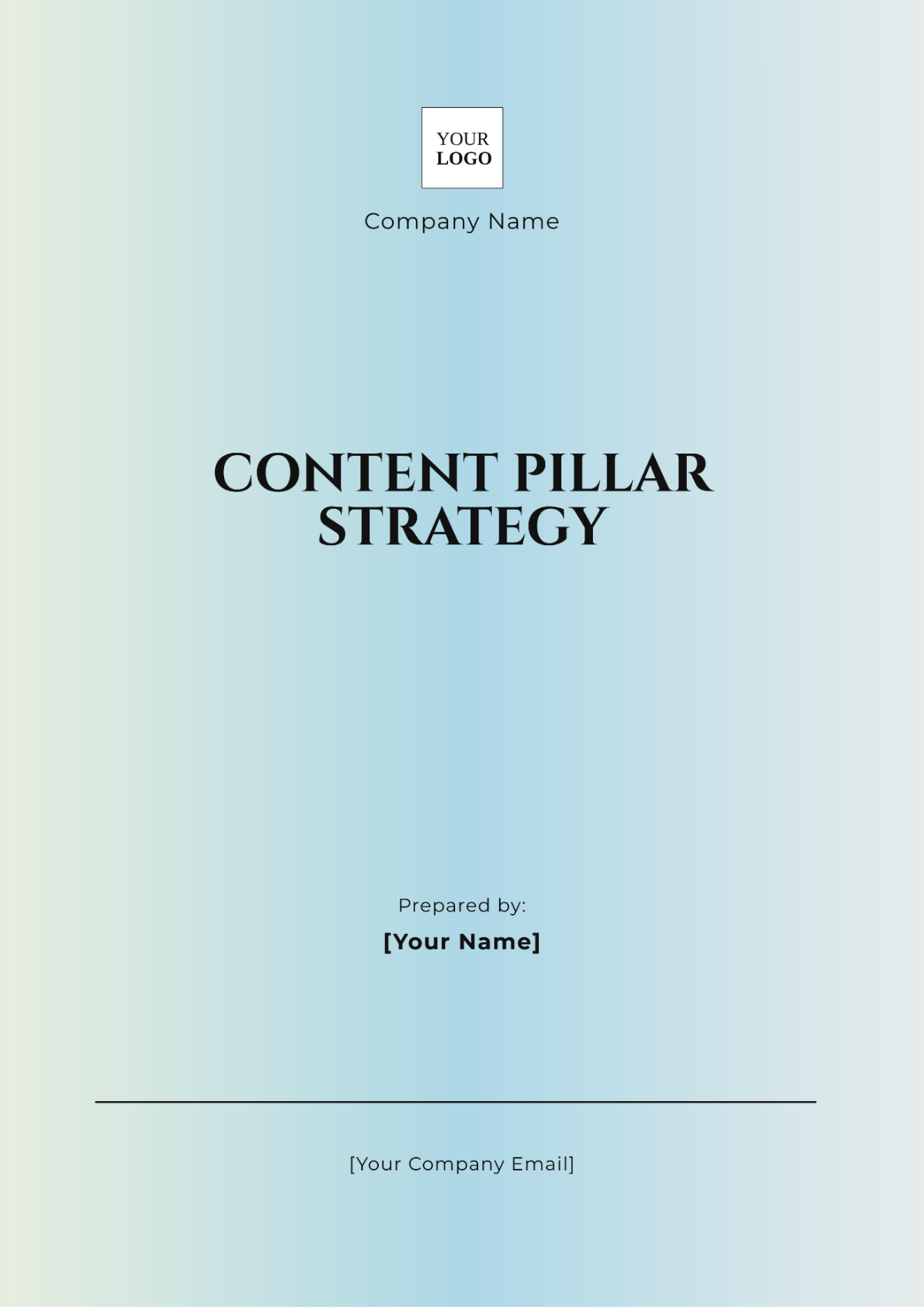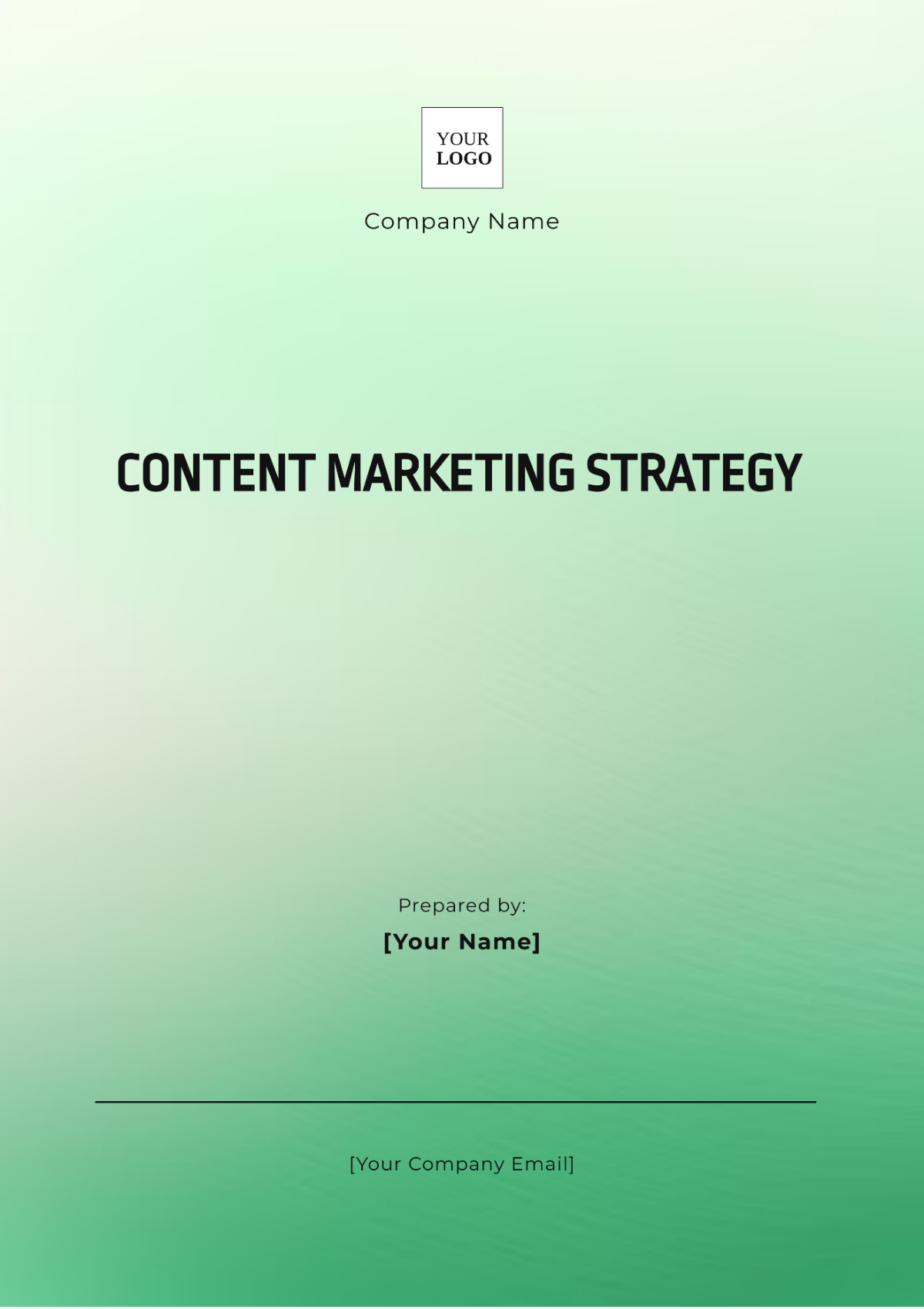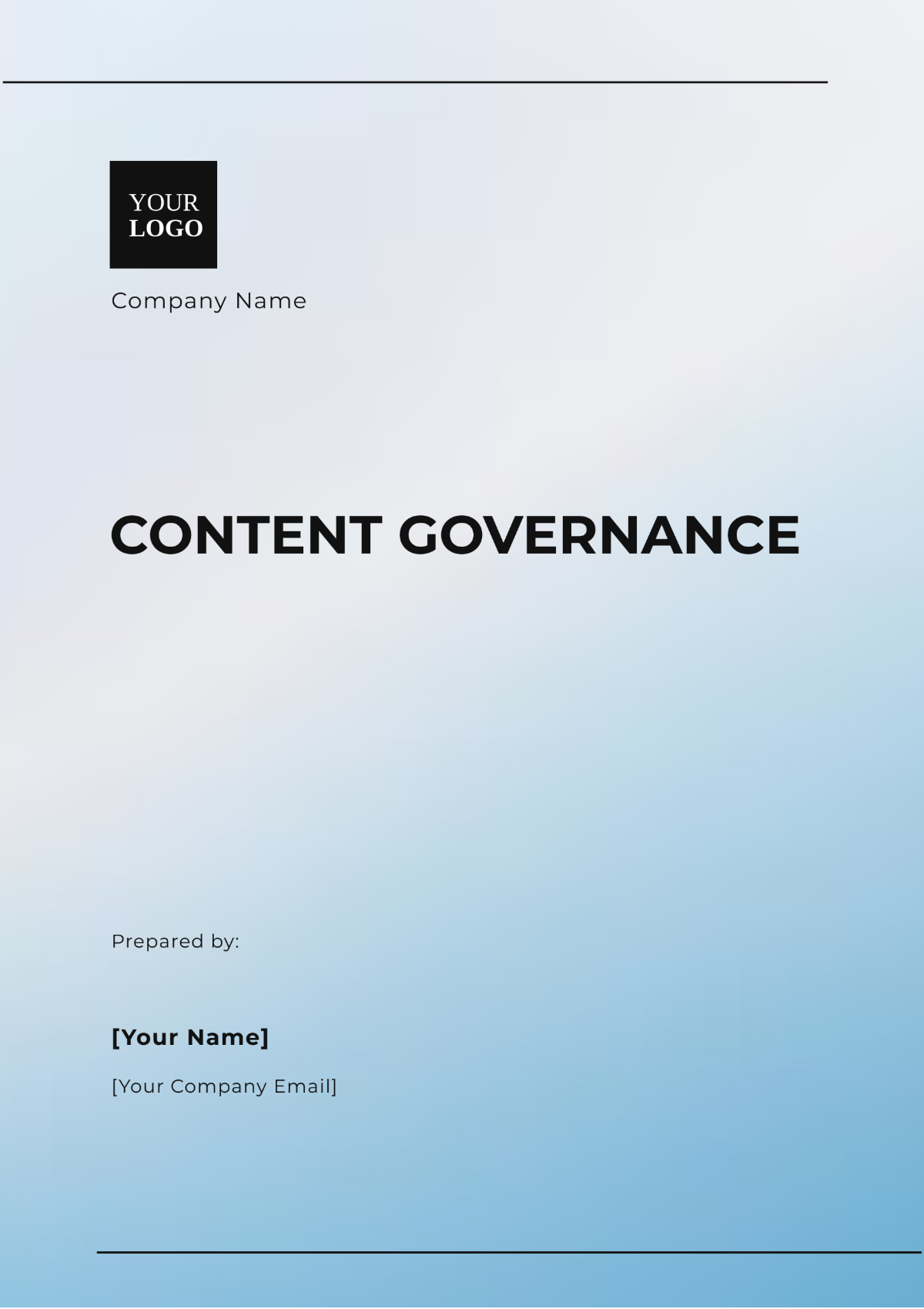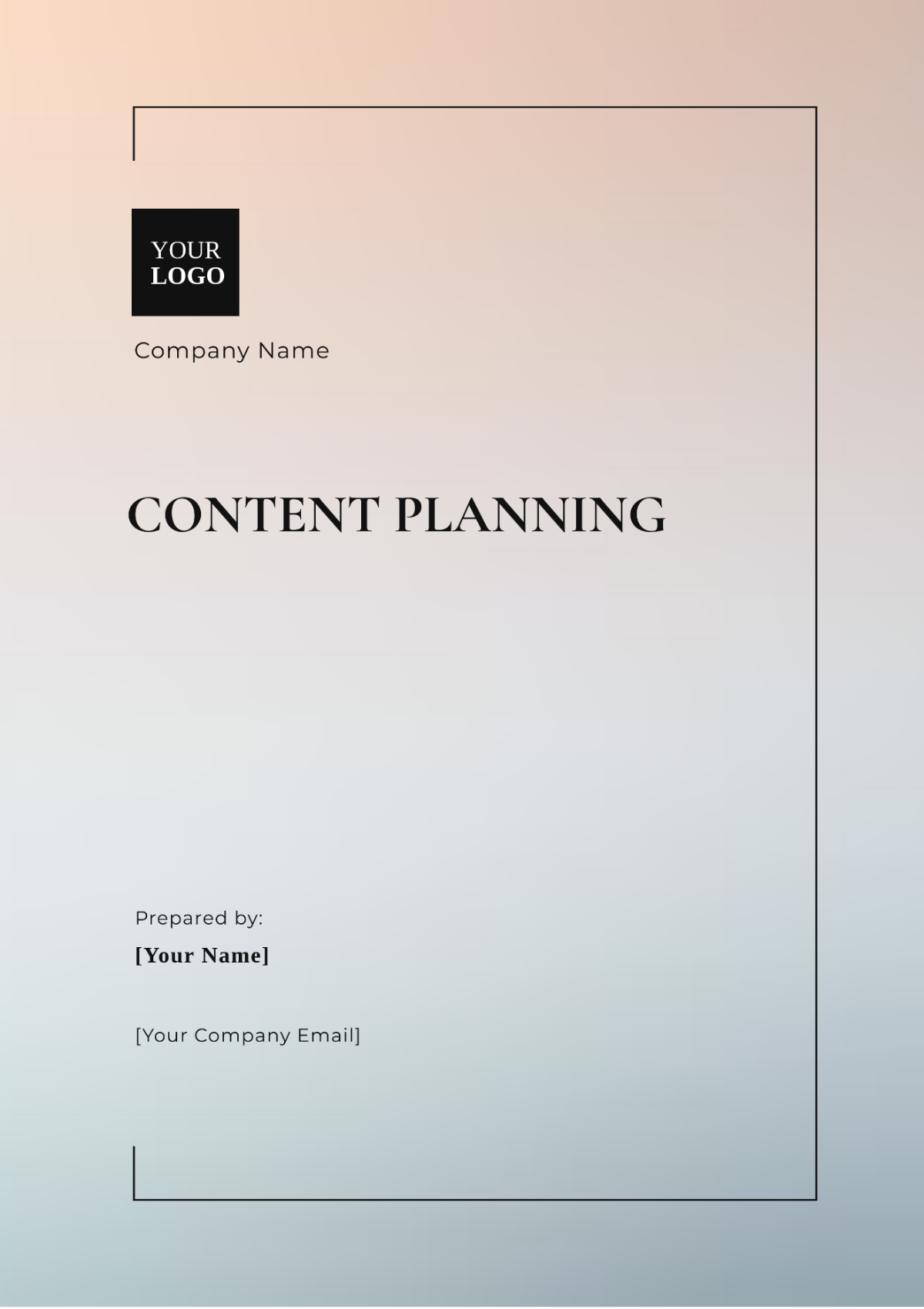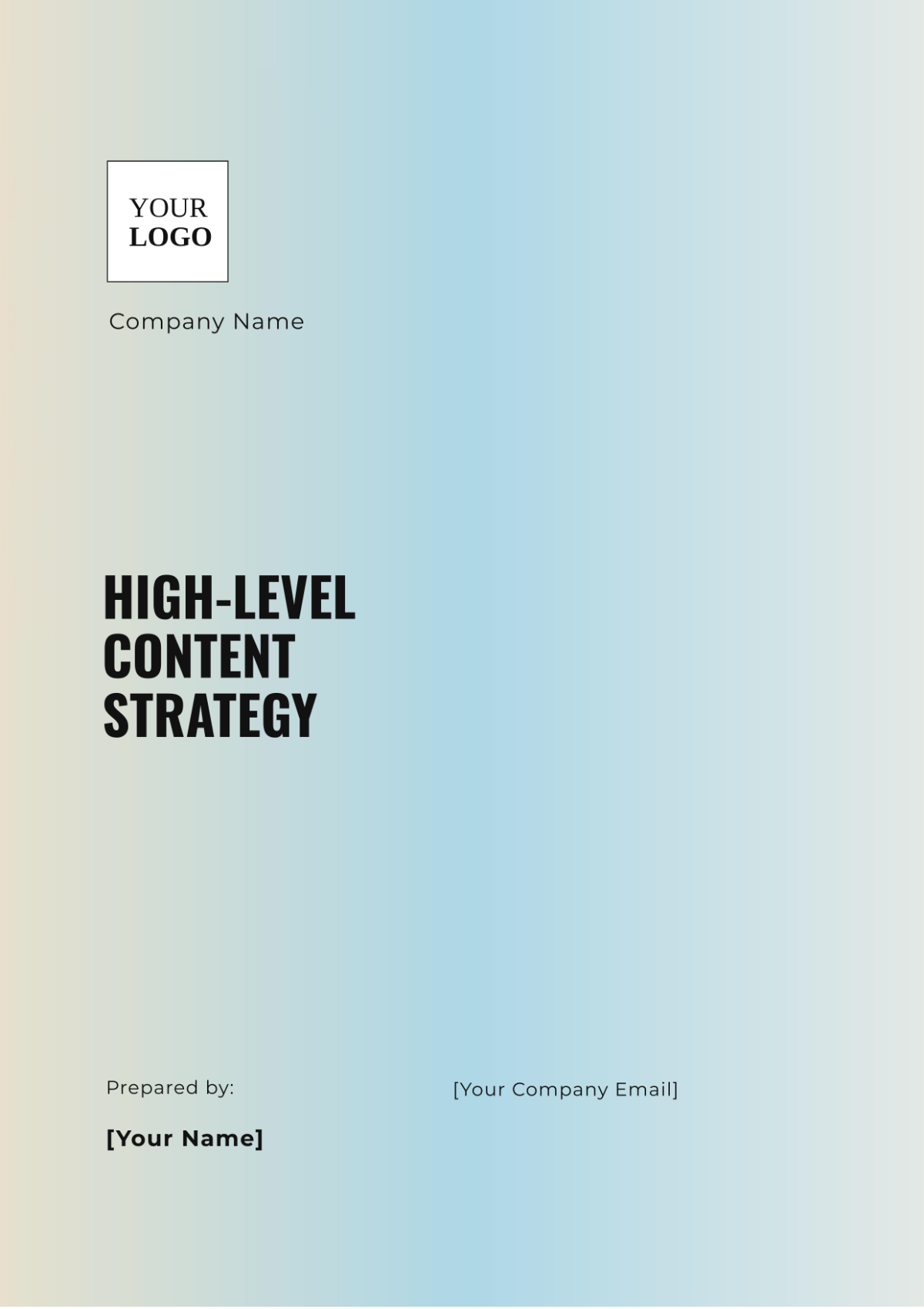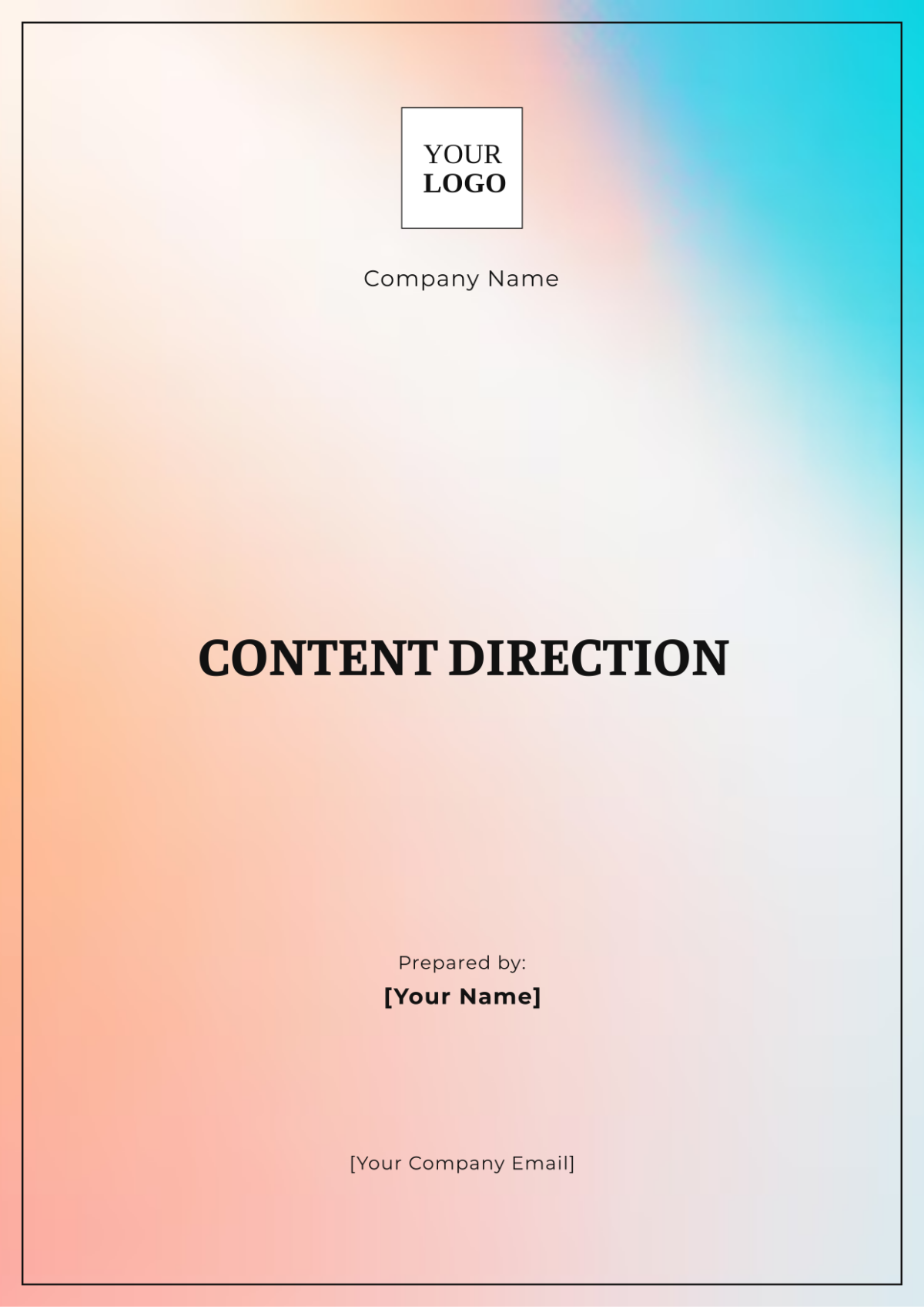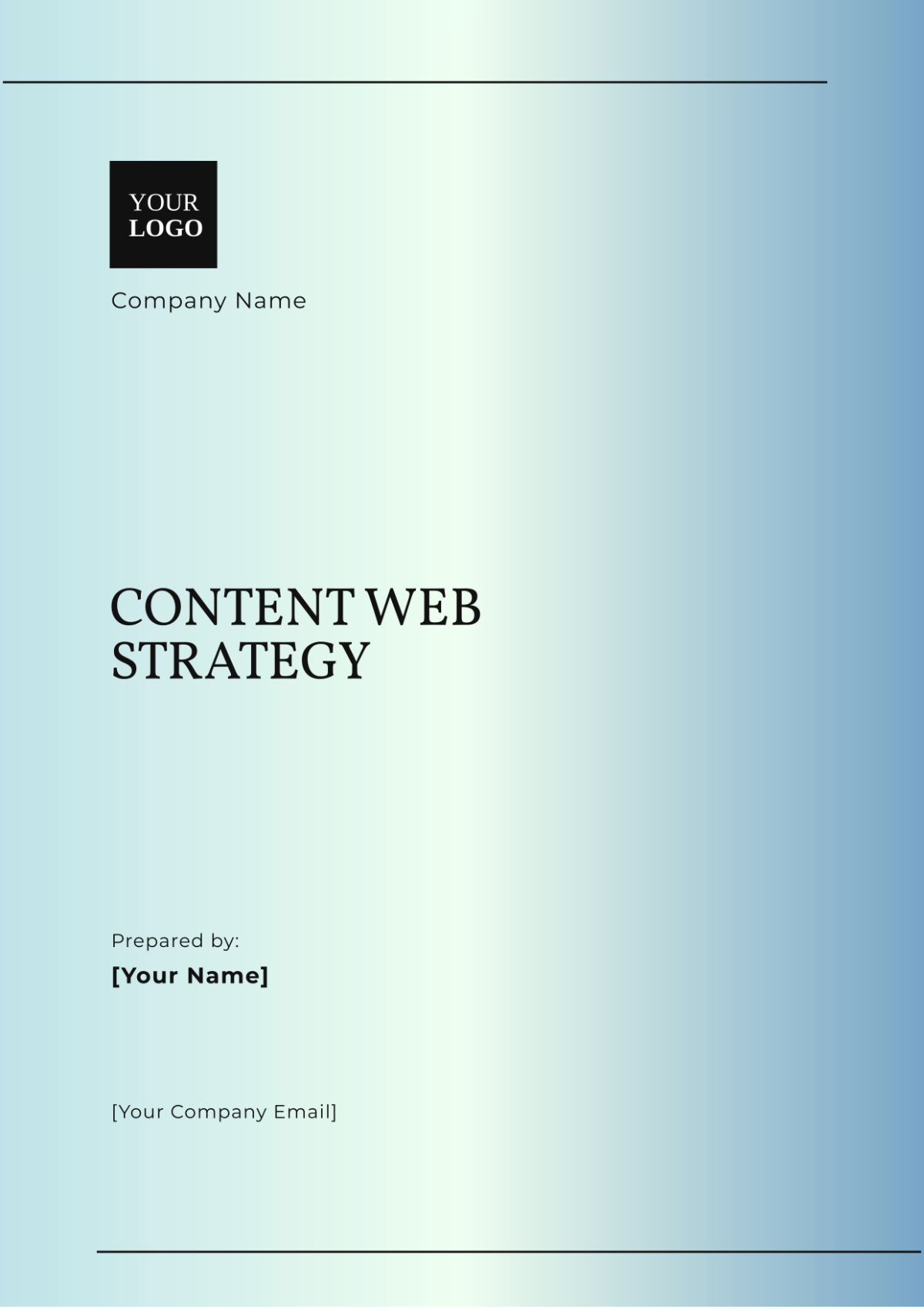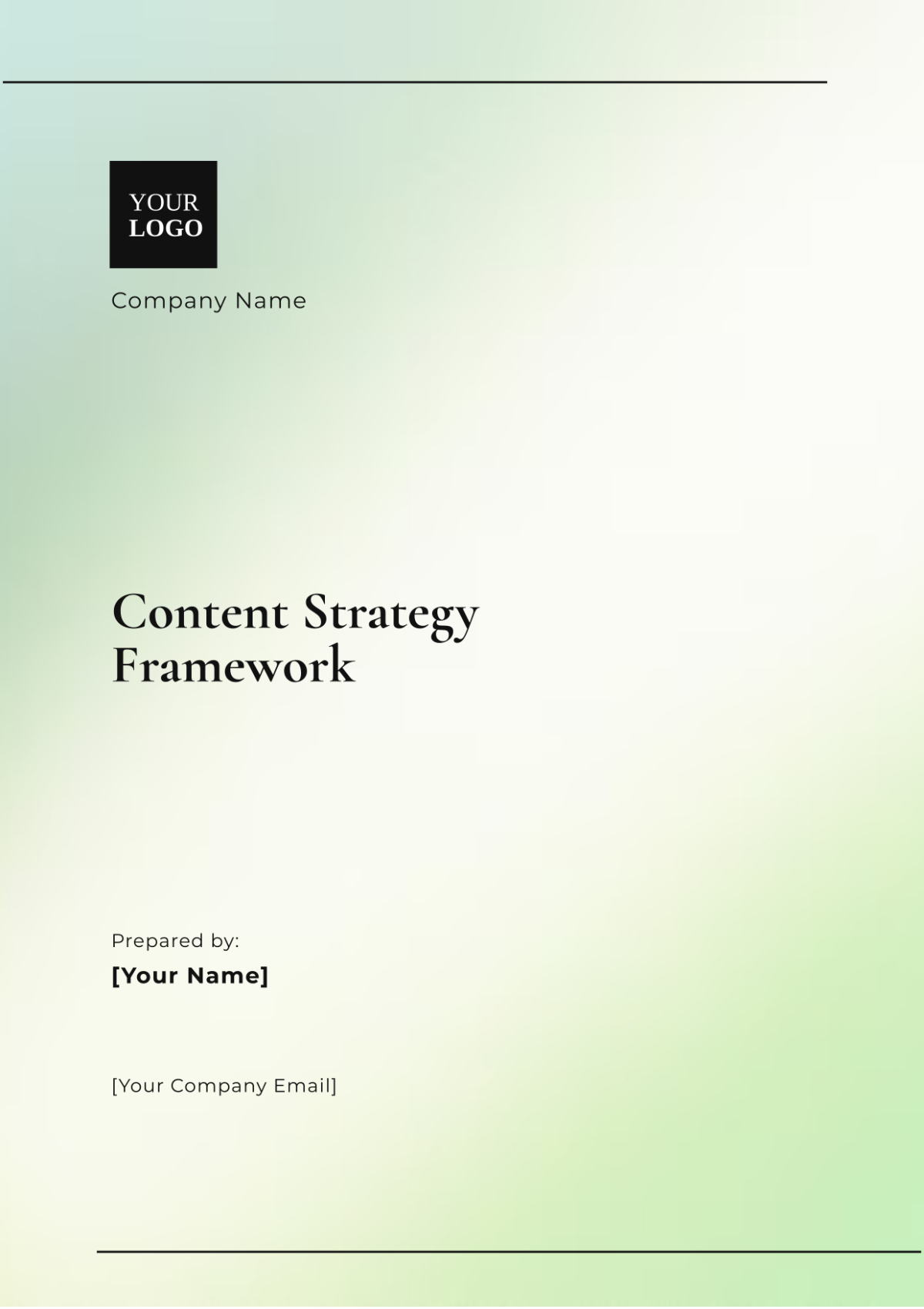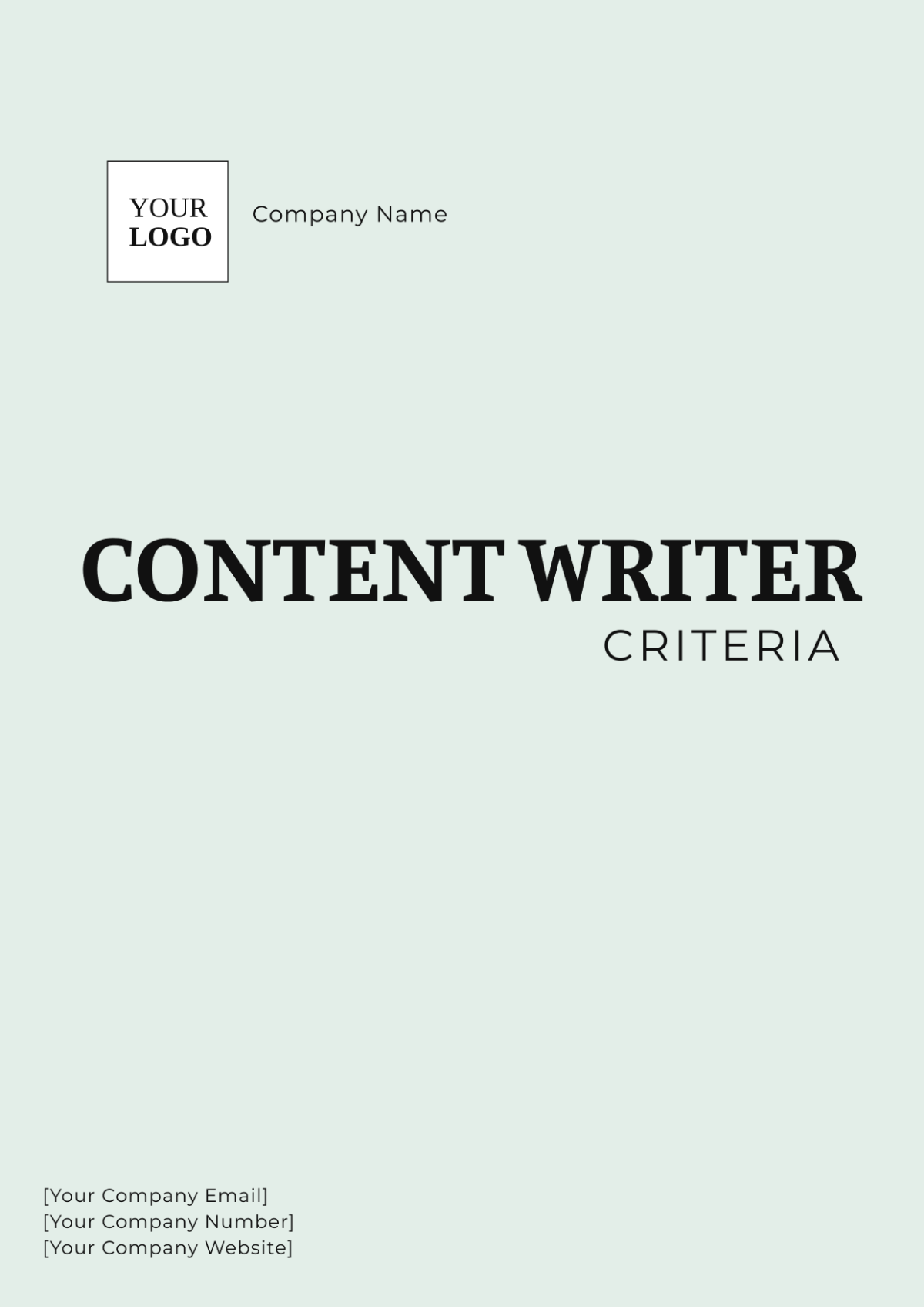Free Content Strategy Layout Template
Content Strategy Layout
Prepared by: [Your Name]
I. Objectives
Goal 1: Increase Brand Awareness
Objective: Enhance the visibility of [Your Company Name] by 20% within the next year.
Action Plan: Implement targeted content marketing campaigns, including social media promotions, influencer collaborations, and press releases. Monitor brand mentions and engagement metrics across all channels.
Metrics: Track brand mentions using tools like Google Alerts and Mention, analyze social media reach and impressions, and measure changes in website traffic through Google Analytics.
Goal 2: Drive Website Traffic
Objective: Achieve a 15% increase in website traffic by 2051.
Action Plan: Create SEO-optimized blog posts, enhance website content with relevant keywords, and utilize paid search advertising. Develop a content calendar that includes regular updates and strategic content placement.
Metrics: Monitor website traffic using Google Analytics, track the performance of SEO keywords, and measure the impact of PPC campaigns through Google Ads.
Goal 3: Boost Social Media Engagement
Objective: Increase social media engagement by 30% by the end of 2052.
Action Plan: Develop engaging content tailored to each social media platform, run interactive campaigns, and analyze audience feedback. Schedule regular posts and create a content calendar to maintain consistency.
Metrics: Measure likes, comments, shares, and follower growth using social media analytics tools like Hootsuite and Sprout Social.
II. Target Audience
Audience Segment 1: Young Professionals
Demographics: Aged 25-34, tech-savvy, and early adopters of new technologies.
Interests: Emerging tech trends, productivity tools, career development.
Content Preferences: Informative blog posts, how-to videos, and industry news updates.
Audience Segment 2: Small Business Owners
Demographics: Entrepreneurs and business managers, aged 35-50, looking to enhance their marketing strategies.
Interests: Marketing solutions, business growth strategies, customer engagement.
Content Preferences: Case studies, eBooks, webinars, and practical tips for business success.
Audience Segment 3: Industry Experts
Demographics: Professionals with deep industry knowledge, aged 30-60, involved in strategic decision-making.
Interests: Industry insights, advanced research, strategic planning.
Content Preferences: In-depth research reports, whitepapers, and expert interviews.
III. Content Types
Content Type | Frequency | Content Topics | Format |
|---|---|---|---|
Blog Posts | Weekly | Industry trends, best practices, case studies, and how-to guides | Long-form articles with SEO optimization, including images, infographics, and external links. |
Videos | Monthly | Product tutorials, behind-the-scenes footage, customer testimonials, and expert interviews | High-definition video content with engaging visuals and clear audio, including subtitles and calls-to-action. |
Infographics | Quarterly | Market data, key statistics, and visual representations of complex information | Visually appealing graphics with concise information, designed for easy sharing on social media and websites. |
Social Media Posts | Daily | Updates, promotions, user-generated content, and engagement posts | Short, engaging text posts with images or videos, tailored to each platform’s best practices. |
IV. Content Channels
Website
Purpose: Central hub for all content, including blog posts, resources, and company updates.
Strategy: Optimize content for SEO, ensure mobile responsiveness, and enhance user experience with clear navigation and calls-to-action.
Social Media
Platforms: Facebook, Twitter, LinkedIn, Instagram.
Strategy: Post regular updates, engage with followers, run targeted ad campaigns, and use platform-specific features (e.g., Stories on Instagram).
Email Newsletter
Frequency: Monthly.
Content: Curated content highlights, industry news, and exclusive offers.
Strategy: Segment email lists for personalized content, track open rates and click-through rates, and optimize subject lines and content.
YouTube
Purpose: Host and share video content.
Strategy: Upload high-quality videos regularly, optimize titles and descriptions for search, and engage with viewers through comments and community posts.
V. Editorial Calendar
Month | Content | Tasks | Milestones |
|---|---|---|---|
August 2050 | Launch blog series on industry trends | Research topics, create content, schedule publication | Complete and publish the first blog post by August 5, promote through social media by August 10 |
September 2050 | Release introductory video series on product features | Script, film, and edit videos, upload to YouTube, create promotional materials | Publish first video by September 1, promote via email newsletter by September 5 |
October 2050 | Publish infographic on market insights | Design infographic, write accompanying blog post, schedule social media posts | Complete design by October 10, publish infographic and blog post by October 15 |
November 2050 | Host webinar on effective marketing strategies | Plan webinar content, invite speakers, promote event | Send invitations by November 1, host webinar on November 20, share recording by November 25 |
VI. Metrics and KPIs
To measure website traffic, use Google Analytics to track metrics such as the number of visitors, page views, average session duration, and bounce rate. For social media engagement, tools like Hootsuite and Sprout Social can help monitor likes, comments, shares, follower growth, and engagement rate.
Lead generation can be tracked using CRM software to measure the number of leads generated, lead conversion rate, and cost per lead. Conversion rates should be analyzed with Google Analytics and conversion tracking tools to determine the percentage of visitors who complete desired actions, such as form submissions or purchases.
VII. Content Guidelines
Tone and Style
Tone: Professional, yet approachable; informative, but engaging.
Style: Clear and concise language, consistent voice across all content.
Brand Voice
Voice: Reflects [Your Company Name]’s core values of innovation, reliability, and customer-centricity.
Consistency: Maintain a consistent tone and messaging across all platforms and content types.
Visual Elements
Guidelines: Use brand colors #0044CC (blue), #FF6600 (orange); fonts Arial and Helvetica; imagery should align with brand aesthetics.
VIII. Competitor Analysis
TechVision Inc.
Strengths | Weaknesses |
High-quality video content In-depth interviews with tech experts Strong visual branding Engaging video formats | Limited written content Higher production costs |
Opportunities | Threats |
Expand into written content Explore cost-effective production methods | Competitors offering a wider range of content types Rising production costs impacting profitability |
MarketPulse Solutions
Strengths | Weaknesses |
Strong social media engagement Active presence on multiple platforms High engagement rates Effective use of social media tools | Content may lack depth Over-reliance on trending topics |
Opportunities | Threats |
Develop more in-depth content Diversify content strategies beyond trending topics | Competition from brands with more diverse content offerings Social media trends changing rapidly |
InsightData Analytics
Strengths | Weaknesses |
Comprehensive research reports Detailed data analysis Strong industry reputation | Limited interactive content Less frequent updates |
Opportunities | Threats |
Incorporate interactive content to engage a broader audience Increase the frequency of content updates | Competitors offering more frequent and interactive content Potential shifts in industry focus requiring rapid adaptation |
IX. Contact Information
Contact Person: [Your Name]
Email Address: [Your Email]
Company Name: [Your Company Name]
